IEEE AP-S/MTT-S Distinguished Instructors Workshop
Date: 28 October 2024 CSET 10:00 – 11:30 AM CET
IEEE Region: 8
Venue: Hybrid – online and in classes in Region 8
DIW Speakers: Prof. Anding Zhu, Prof. Shiban Koul and Prof. Debatosh Guha
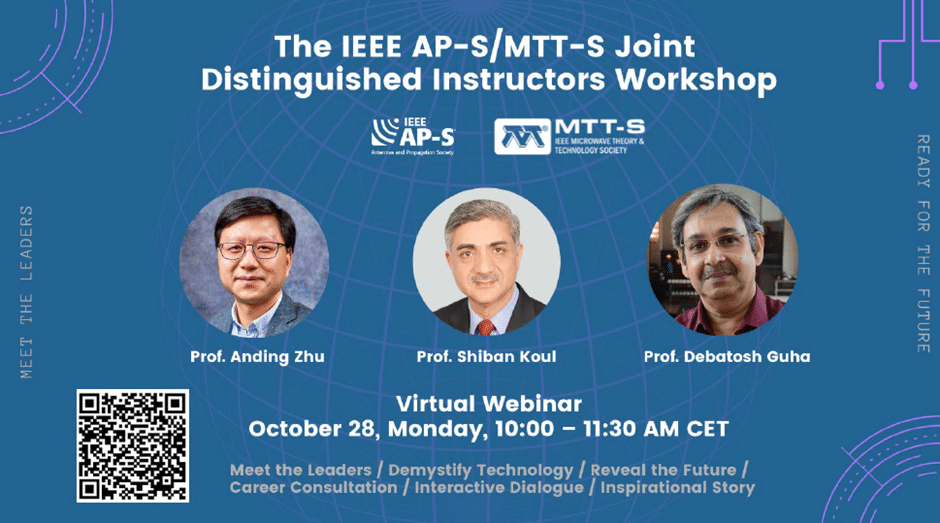
About the DIW:
The DIW program is jointly supported by the IEEE Antennas and Propagation Society (AP-S) and Microwave Theory and Techniques Society (MTT-S). The DIW program aims to stimulate the interests among undergraduate or tertiary students to bridge the pathway to the development of future wireless communications technologies. Through the DIW program, world-famous educators and engineers will introduce the history of microwave antenna technologies, the evolution of modern wireless systems, and the cutting-edge wireless applications to be used in our daily lives in the foreseeable future. The instructors will also share their own experiences of growth.
Attendance (on campus):
Ruhr-University Bochum, Germany:
- Local Host: Prof. Dr.-Ing. Ilona Rolfes
- The number of students in the classroom: 80
K.N. Toosi University of Technology:
- Local Host: Prof. Hadi Aliakbarian
- The number of students in the classroom: 20
Online: approximately 50
Attendance
Total estimated attendees: 150
DIW Organising Committee:
IEEE APS: Cindy Furse, Karl Warnick, Simon Adrian,
IEEE MTT-S: Yang Yang, Xun Gong, Miguel A. G. Laso, Ilona Rolfes
Region 8 Ambassadors: See Appendix 1
Agenda:
IEEE AP-S/MTT-S Joint DIW – Regions 8 , October 28 (10am – 11:30am, CET)
9:30 am – 10:00 am – Workshop Preparation. The Distinguished Speakers, ambassadors and moderators (faculty members) log in to the Webex system. Arrange the students to settle down in the classrooms.
10:00 am – 10:05 am – Opening – Brief introduction to the Distinguished Instructors Workshop (approximately 3-5 min) by the hosts Prof. Ilona Rolfes, Prof. Miguel Laso and Prof. Simon Adrian/Dr. Bernd Hofmann.
10:05 am – 10:25 am (about 20 min) – Presentation by Prof. Anding Zhu (University College Dublin)
10:25 am – 10:45 am (about 20 min) – Presentation by Prof. Shiban Koul (Indian Institute of Technology, Delhi)
10:45 am – 11:05 am (about 20 min) – Presentation by Prof. Debatosh Guha (University of Calcutta)
11:05 am – 11:30 am (about 25 min) – Q & A in (questions posted in the Chat window and/or raised by the moderators (faculty members) from the classroom
11:30 am – 11:35 am Closing (Photo taken for all through Webex) by Prof. Ilona Rolfes, Prof. Miguel Laso, Prof. Simon Adrian/Dr. Bernd Hofmann and other co-hosts
The Workshop:
The Talk by Prof. Anding Zhu

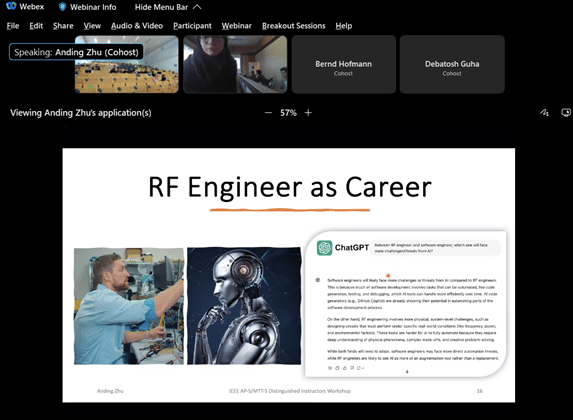
The Talk by Prof. Shiban Koul
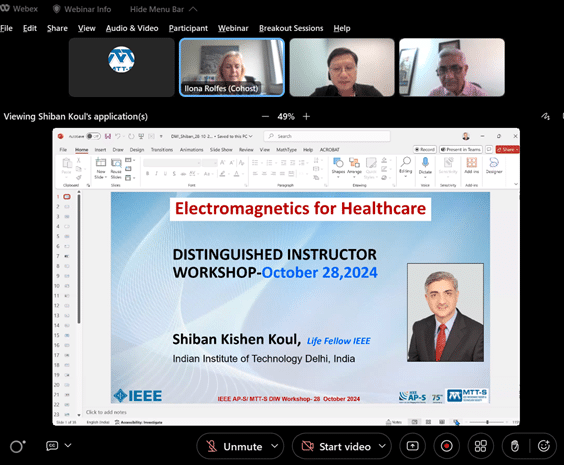
The Talk by Prof. Debatosh Guha
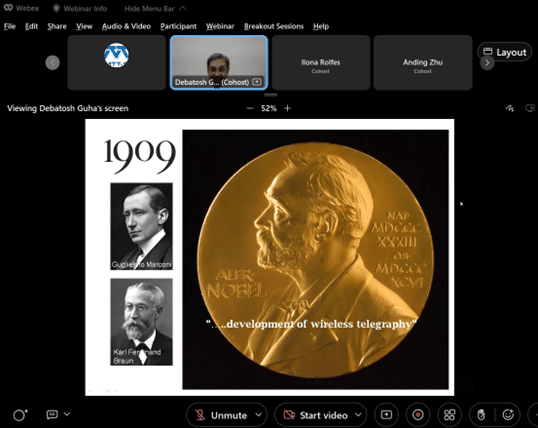
Screenshot at the end of the DIW
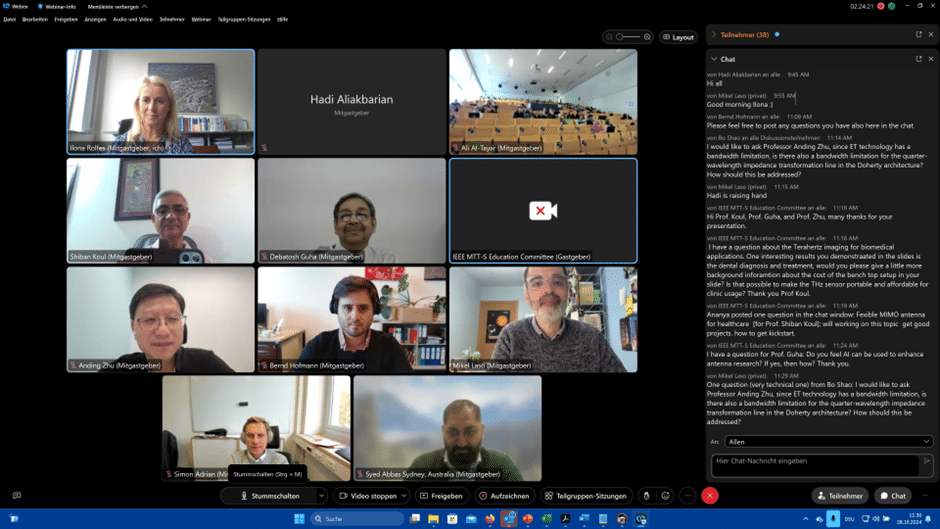
Appendix 1: List of DIW Ambassadors in Region 8
| Name | Country | University |
| Reinhard Teschl | Austria | TU Graz |
| Ali Darwish | Egypt | American Univ in Cairo |
| Stephane Bila | France | Limoges/Xlim |
| Nicolas Delhote | France | Limoges/Xlim |
| Aurelian Crunteanu | France | Limoges/Xlim |
| Anthony Ghiotto | France | Bordeaux |
| Michael Höft | Germany | Kiel University |
| Nils Pohl | Germany | Ruhr University Bochum |
| Ilona Rolfes | Germany | Ruhr University Bochum |
| Vahid Nayyeri | Iran | Iran Univ. Science and Technology |
| Dimitra Psychogiou | Ireland | Tyndal National Institute |
| Pino Macchiarella | Italy | Politecnico di Milano |
| Cristiano Tomassoni | Italy | Univ. Perugia |
| Mohamed Essaaidi | Morocco | Mohammed V University |
| Michal Mrozowski | Poland | Gdansk University |
| Adam Lamecki | Poland | Gdansk University |
| Nuno Carvalho | Portugal | University of Aveiro |
| Zlatica Marinkovic | Serbia + Montenegro + Bosnia & Herzegovina + North Macedonia + Bulgaria | University of Niš |
| Tinus Stander | South Africa | University of Pretoria |
| Miguel Laso | Spain | UPNA |
| Roberto Gómez García | Spain | Univ. Alcalá |
| Christian Fager | Sweden | Chalmers |
| Yi Wang | UK | Univ. of Birmingam |
| Nikolaos Uzunoglu | Greece | National Technical University of Athens |
| Tibor Berceli | Hungary | Budapest University of Technology and Economics |
| Siddik Yarman | Turkey | Istanbul Technical University |
| Nazih Khaddaj Mallat | United Arab Emirates | Al Ain University |
Appendix 2: Photos from the classes
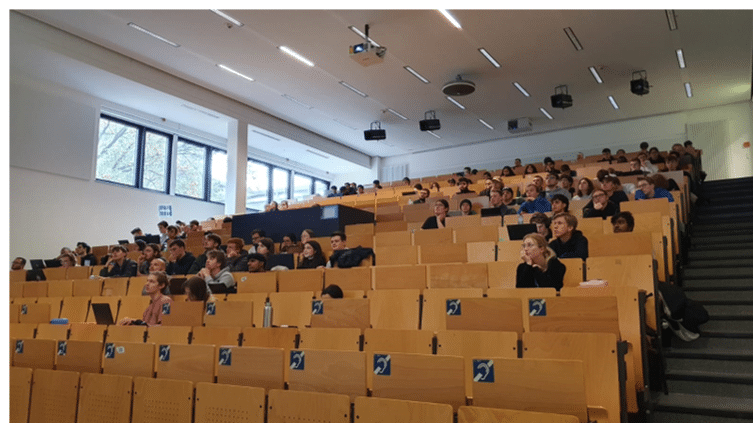
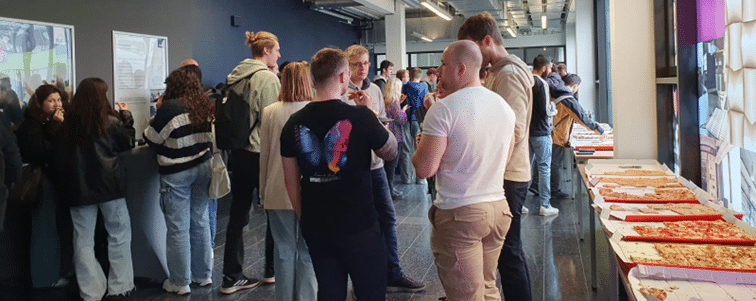
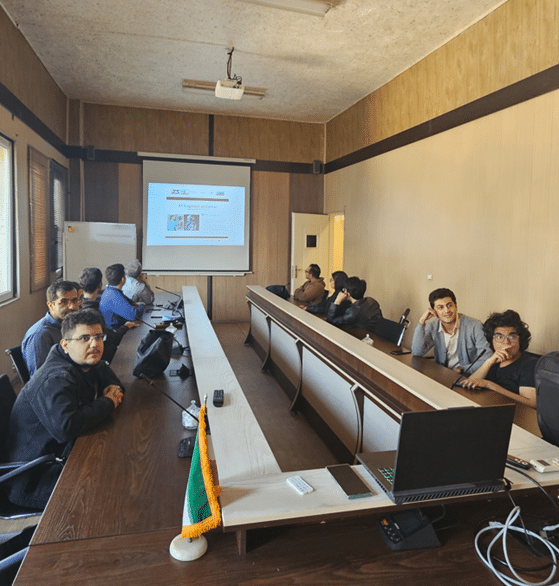
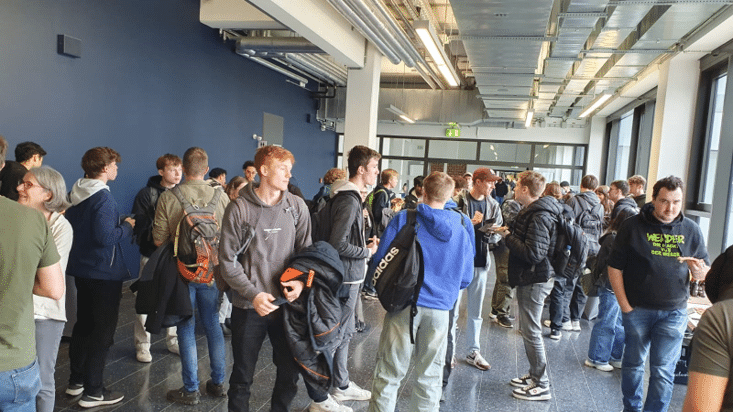
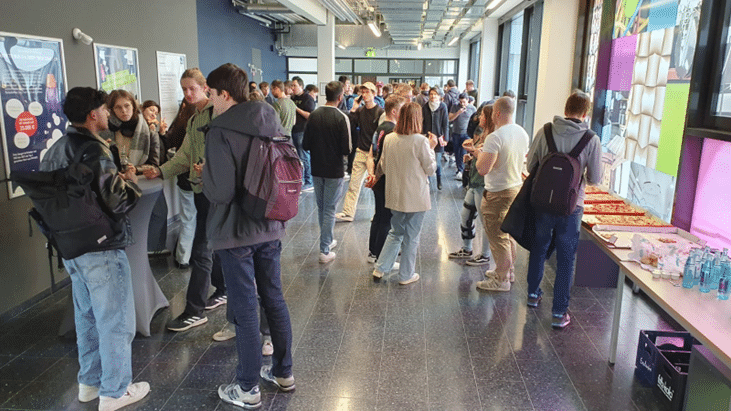
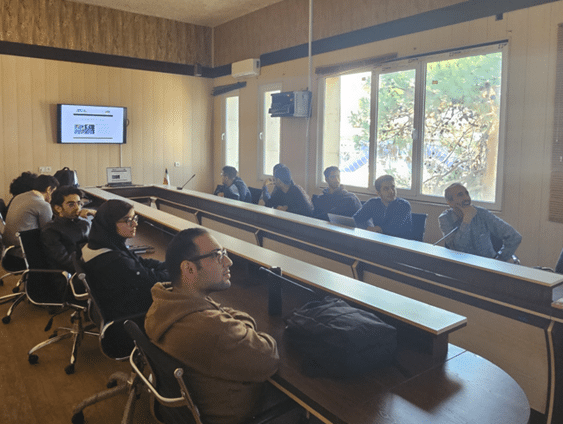
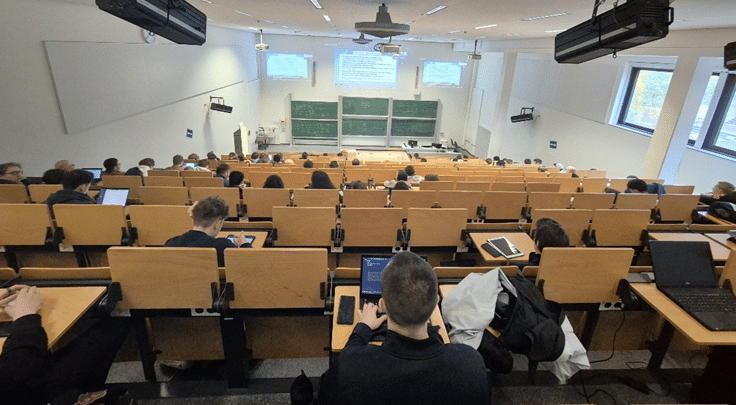
Date: 25 October 2024 EDT 3pm – 5pm
IEEE Region: 1-7&9
Venue: Hybrid – online and in classes in Regions 1-7&9.
DIW Speakers: Prof. Xun Gong, Prof. Haihan Sun, Prof. Shiban Koul
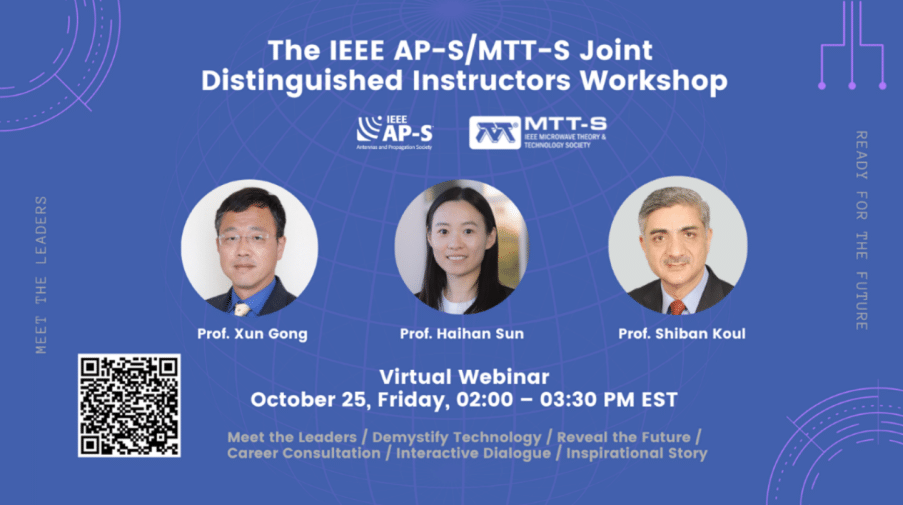
About the DIW:
The DIW program is jointly supported by the IEEE Antennas and Propagation Society (AP-S) and Microwave Theory and Techniques Society (MTT-S). The DIW program aims to stimulate the interests among undergraduate or tertiary students to bridge the pathway to the development of future wireless communications technologies. Through the DIW program, world-famous educators and engineers will introduce the history of microwave antenna technologies, the evolution of modern wireless systems, and the cutting-edge wireless applications to be used in our daily lives in the foreseeable future. The Instructors will also share their own experience of growth.
Attendance (on campus):
University of Central Florida:
- Local Host: Prof. Xun Gong
- The number of students in classroom: 50
University of Alabama:
- Local Host: Prof. Nathan Jeong
- The number of students in the classroom: 55
CISESE, Ensenada, BC. Mexico
- Local Host: Carmen Maya
- The number of students in the classroom: 25
Instituto Federal da Bahia (IFBA), Bahia, Brazil
- Local Host: Arilson Oliveira
- The number of students in the classroom: 17
Talles Gomez Bressanini:
- Local Host: Talles Gomez Bressanini
- The number of students in the classroom: Approx. 15
Univ. Federal Rural do Semi Arido (UFERSA), Mossoro, Brazil
- Local Host: Leonardo Oliveira de Sousa
- The number of students in the classroom:29
Total estimated attendees on campus: 191
Total estimated attendees: 250 (online and in class)
DIW Organising Committee:
IEEE APS: Cindy Furse, Karl Warnick, Simon Adrian
IEEE MTT-S: Yang Yang, Xun Gong, Miguel A. G. Laso
Chairs: José Ernesto Rayas-Sanchez, Bernd Hofmann, and Nathan Jeong
Organising Ambassadors:
Ramón López La Valle, Universidad Nacional de La Plata, Argentina
Marcos Tavares de Melo, UFPE – Federal University of Pernambuco, Brazil
Glauco Fontgalland, UFCG – Universidade Federal do Campina Grande, Brazil
Francisco Pizarro, Pontificia Universidad Católica de Valparaiso, Chile
Carmen Maya-Sánchez, CICESE, Mexico
Jose E. Rayas-Sanchez, ITESO – The Jesuit University of Guadalajara, Mexico
Eliot Rosado-Velasquez, UNSA – Universidad Nacional de San Agustin, Peru
Nathan Jeong, University of Alabama, USA
Sonali Das, University of Central Florida, USA
Rashaunda Henderson, UTD, USA
Agenda:
IEEE AP-S/MTT-S Joint DIW – Regions 1-7&9 , October 25 (2pm – 3:30pm, EST)
- 1:30 pm – 2:00 pm – Workshop Preparation. The Distinguished Speakers, ambassadors and moderators (faculty members) log in to the Webex system. Arrange the students to settle down in the classrooms.
- 2:00 pm – 2:05 pm – Opening – Brief introduction to the Distinguished Instructors Workshop (approximately 3-5 min) by the hosts Prof. Nathan Jeong, Prof. Jose Ernesto Rayas-Sanchezand Dr. Bernd Hofmann.
- 2:05 pm – 2:25 pm (about 20 min) – Presentation by Xun Gong(University of Central Florida)
- 2:25 pm – 2:45 pm (about 20 min) – Presentation by Haihan Sun(University of Wisconsin-Madison)
- 2:45 pm – 3:05 pm (about 20 min) – Presentation by Shiban Koul(Indian Institute of Technology, Delhi)
- 3:05 pm – 3:30 pm (about 25 min) – Q & A in (questions posted in the Chat window and/or raised by the moderators (faculty members) from the classroom
- 3:30 pm – 3:35 pm Closing (Photo taken for all through Webex) by Nathan Jeong, Prof. Jose Ernesto Rayas-Sanchez, Dr. Bernd Hofmannand other co-hosts
Photo Gallery:
The Talk by Prof. Xun Gong
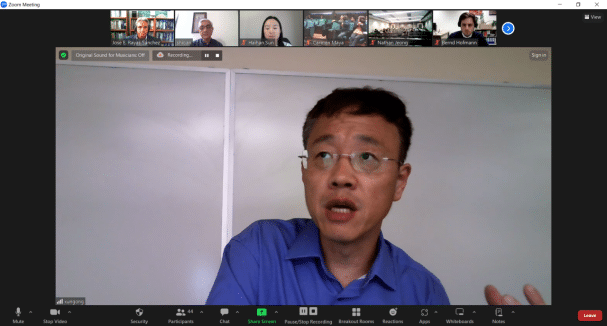
The Talk by Prof. Haihan Sun
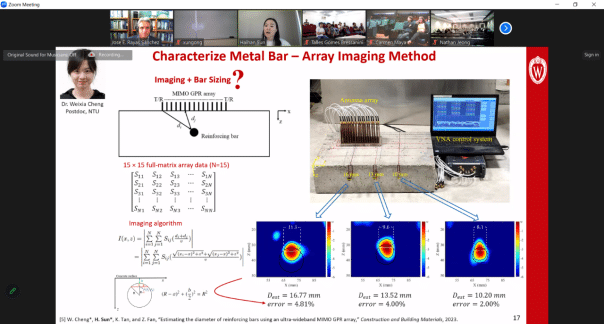
The Talk by Prof. Shiban Koul
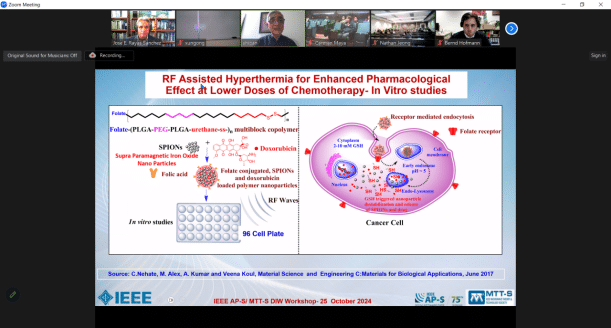
Prof. Carmen Maya with Students from CISESE, Ensenada, BC. Mexico
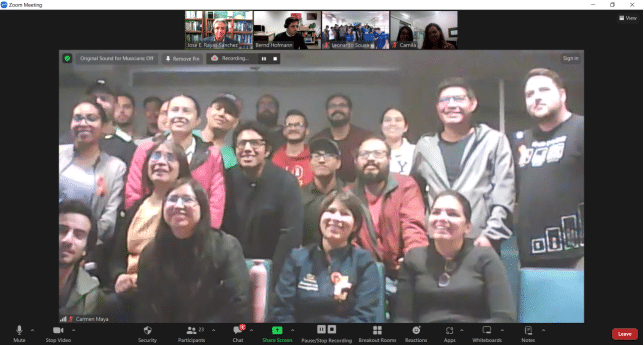
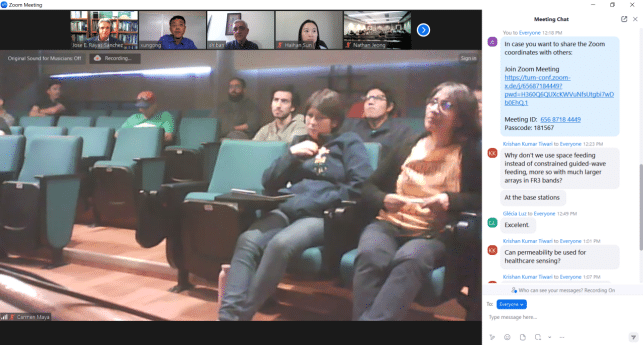
Prof. Nathan Jeong with Students from the University of Alabama
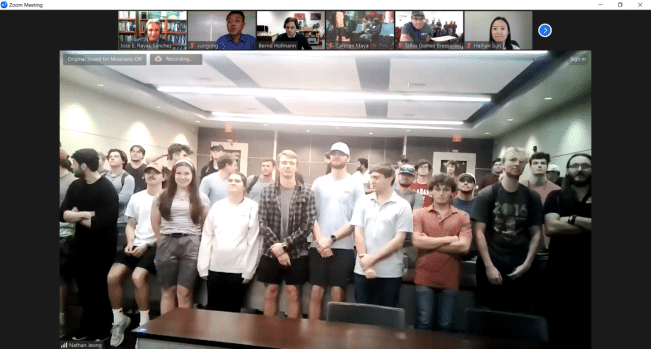
Instituto Federal da Bahia (IFBA), Bahia, Brazil
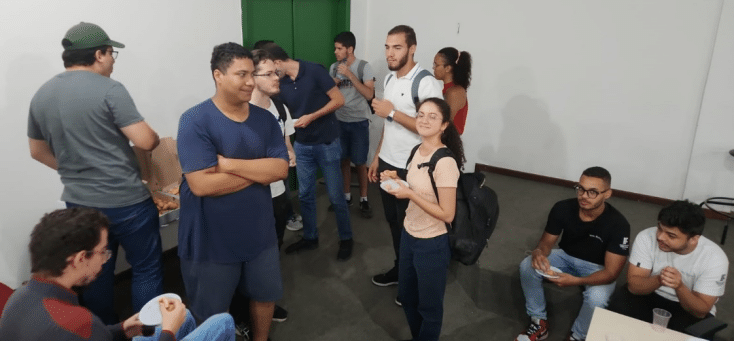
Talles Gomez Bressanini and group of students
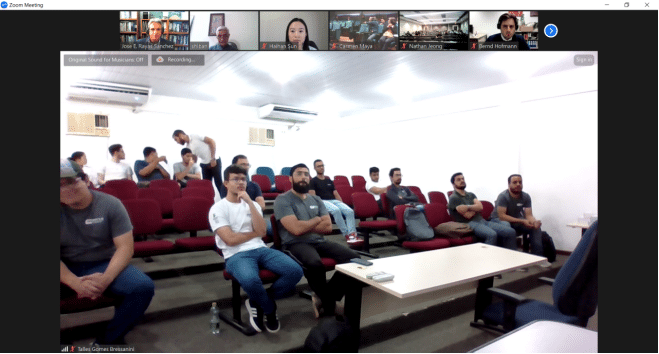
Univ. Federal Rural do Semi Arido (UFERSA), Mossoro, Brazil
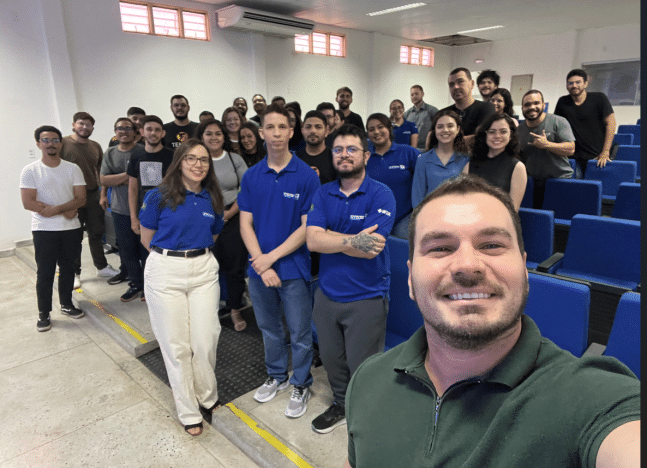

Date: 5 March 2024 (2 pm – 4 pm IST)
Regions: 10
Venue: WebEx and multiple campus in India, China and other Region 10 countries.
DMI Speakers: Prof. Reyhan Baktur, Prof. Shiban Koul and Prof. Jae-Sung Rieh
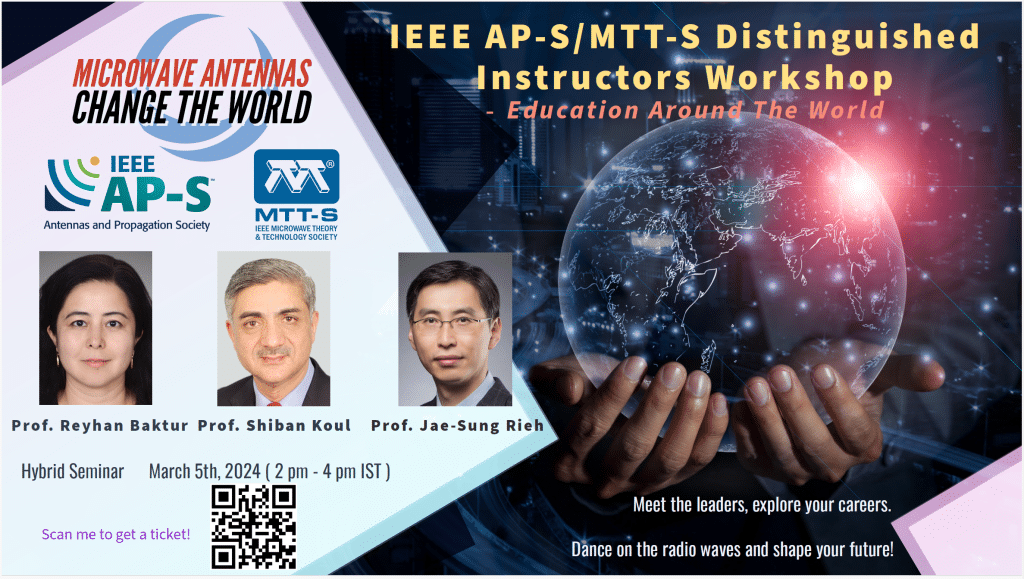
About the DIW:
The DIW program is jointly supported by the IEEE Antennas and Propagation Society (AP-S) and Microwave Theory and Techniques Society (MTT-S). The DIW program aims to stimulate the interests among undergraduate or tertiary students to bridge the pathway to the development of future wireless communications technologies. Through the DIW program, world-famous educators and engineers will introduce the history of microwave antenna technologies, the evolution of modern wireless systems, and the cutting-edge wireless applications to be used in our daily lives in the foreseeable future. The instructors will also share their own experiences of growth.
Attendance:
Total attendees (on campus + online): approximately 2080 students
Number of registrations based on Webex statistics: 601
- India:
- Manipal University Jaipur, Rajasthan(Faculty Advisor: Dr. Dinesh Yadav) – 329 students
- Indian Institute of Technology Palakkad, Kerala(Faculty Advisor: Dr. Sukomal Dey) – 47 students
- QIS College of Engineering & Technology, Ongole,Telangana (Faculty Advisor- Dr. ChristyJones Prasad) – 40 students
- Osmania College of Engineering, Hyderabad(Faculty Advisor – Dr. Dasari Rama krishna and Dr. Anantha Bharati) – 40 students
- University of Engineering & Management, Jaipur(Faculty Advisor: Dr. Prashant Ranjan) – 82 students
- Swami Keshvanand Institute of Technology, Management & Gramothan, Jaipur, Rajasthan(Faculty Advisor: Dr. Shubhi Jain) – 58 students
- Poornima College of Engineering, Jaipur, Rajasthan(Faculty Advisor: Dr. Garima Mathur) – 68 students
- Anand International College of Engineering, Jaipur(Faculty Advisor: Dr. Vivek Bhojak) – 73 students
- Institute of Engineering & Technology, GLA University, Mathura(Faculty Advisor: Dr. Purnima Sharma) – 47 students
- Geetanjali Institute of Technical Studies, Udaipur(Faculty Advisor: Dr. Sandip Das) – 62 students
- Global institute of Technology, Jaipur, Rajasthan(Faculty Advisor: Dr. Pradeep Jha) – 80 students
- V. College of Engineering, Bengaluru, Karnataka (Faculty Advisor: Dr. Mahesh A) – 18 students
- Vallurupalli Nageswara Rao Vignana Jyothi Institute of Engineering and Technology (Faculty Advisor: Dr. Kanti Sudha) – 69 students
- Muffakham Jah College of Engineering and Technolog, Hyderabad (Faculty Advisor: Ayesha Naaz)– 19 students
- Number of registrations on Webex statistics (India): 203
- Total attendees on campus (India): 1032 students
- China:
- Nanjing University of Posts and Telecommunications – 50 students
- Chongqing University – 25 students
- SUSTech University – 28 students
- Tsinghua University – 20 Students
- Zhejiang University – 15 students
- Harbin Institute of University – 20 students
- South China University of Technology (International Campus) – 44 students
- Shanghai JiaoTong University – 16 students
- Fuzhou University – 12 students
- Huazhong University of Science and Technology – 16 students
- Sichuan University – 15 students
- University of Electronics Science and Technology – 46 students
- Southeast University – 18 students
- Sun Yat-sen University – 25students
- Tianjin University – 60 students
- Beijing Universityof Post and Telecommunications – 20 students
- South China University of Technology (Wushan) – 12 students
- Xidian University 5 students
Total attendees on campus (China): 447 students
DMI Organising Committee:
IEEE APS: Cindy Furse, Karl Warnick, Simon Adrian, Tzyh-Ghuang Ma
IEEE MTT-S: Yang Yang, Xun Gong, Miguel A. G. Laso
Organising Ambassadors:
Dinesh Yadav (India), Bernd Hofmann, Sandeep Chaturvedi (India), Sukomal Dey (India), Shiban Koul (India), Sumi (India), ChristyJones Prasad (India), Dasari Rama krishna (India), Anantha Bharati (India), Prashant Ranjan (India), Shubhi Jain (India), Garima Mathur (India), Nitesh Mudgal (India), Meetu Nag (India), Durgesh Kumar (India), Vivek Bhojak (India), Purnima Sharma (India), Sandip Das (India), Pradeep Jha (India), Mahesh A (India), Kanti Sudha (India), Ayesha Naaz (India), Wenquan Che (China), Shaoyong Zheng (China), Syed Muzahir Abbas (Australia), Kaixue Ma (China), Chun Hsing Li (Taiwan), Fu-Kang Wang (Taiwan), Saleem Shahid (Pakistan), Rodica Ramer (Australia), Guangxu Shen (China), Zhihao Jiang (China), Tzyh-Ghuang Ma (Taiwan), Jiayu Zhang (China), Xiang Yi (China), Pinghao Zhou (China), Jingzhou Pang (China), Zihang Qi (China), Wentao Xu (China), Jianhao Gong (China), Hanhan Sun (China), Yunqiu Wu (China), Ziheng Zhou (China), Yucheng Yu (China), Yiwei Liu (China), Changjun Liu (China), Le Xu (China), Yunfei Liu (China), Zhixi Liang (China), Haoshen Zhu (China), Yujie Hang (China), Qingfeng Zhang (China), Xiaojun Bi (China), Suramate Chalermwisutkul (Thailand),Maryam Rasool (Pakistan), Syeda Iffat Naqvi (Pakistan), Kashif Nisar Paracha (Pakistan), Rizwan Anjum (Pakistan), Adnan Iftikhar (Pakistan), Ahsan Sarwar Rana (Pakistan), Muzammil Jusoh (Malaysia), Hasliza A Rahim (Malaysia), Hajar Binti Ja’afar (Malaysia), Nurul Huda Abd Rahman (Malaysia), Niamat Hussain (Korea), Catur Apriono (Indonesia)
Agenda:
1:30 pm – 2:00 pm, IST – Workshop Preparation. The Distinguished Speakers, ambassadors and moderators (faculty members) log in to the Webex system. Arrange the students to settle down in the classrooms.
2:00 pm – 2:05 pm, IST – Opening – Brief introduction to the Distinguished Instructors Workshop, (approximately 3-5 min) by the Co-Hosts Syed Abbas, Dr. Dinesh Yadav, Bernd Hofmannand other co-organizers.
2:05 pm – 2:25 pm, IST (about 20 min) – Presentation by Reyhan Baktur(Utah State University)
2:25 pm – 2:45 pm, IST (about 20 min) – Presentation by Shiban Koul(Indian Institute of Technology, Delhi)
2:45 pm – 3:05 pm, IST (about 20 min) – Presentation by Jae-Sung Rieh(Korea University)
3:05 pm – 3:45 pm, IST (about 40 min) – Q & A in (questions posted in Chat window, and/or raised by the moderators (faculty members) from the classroom.
3:45 pm – 4:00 pm, IST Closing (Photo taken for all through Webex) by Co-Hosts Dr. Syed Abbas, and Dr. Dinesh Yadav, Bernd Hofmann and other co-organizers.
The moment:
- The opening by Syed Abbas – 5 min
- Overview of the DIW workshop
- Agenda
- Introducing the DIW speakers
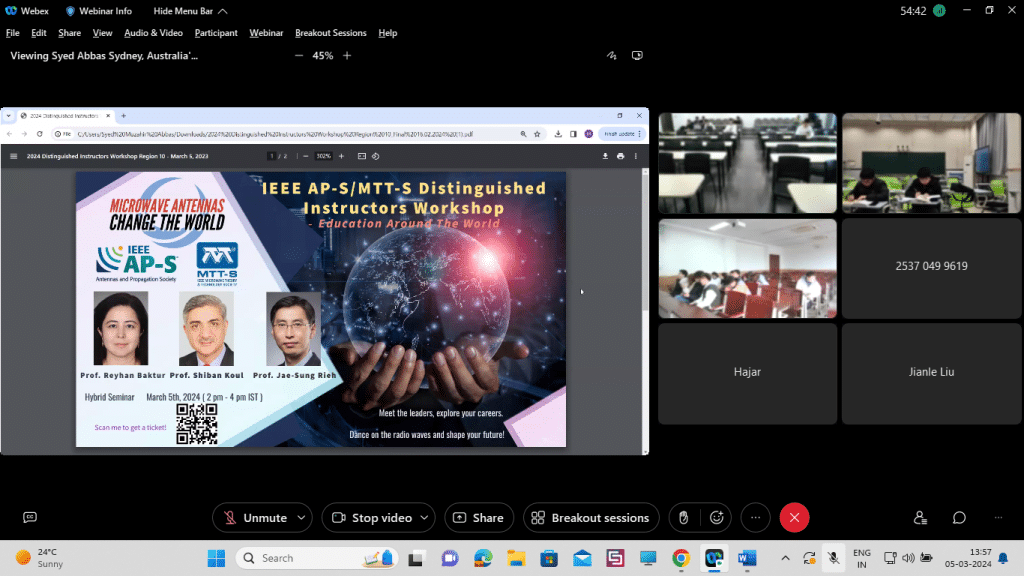
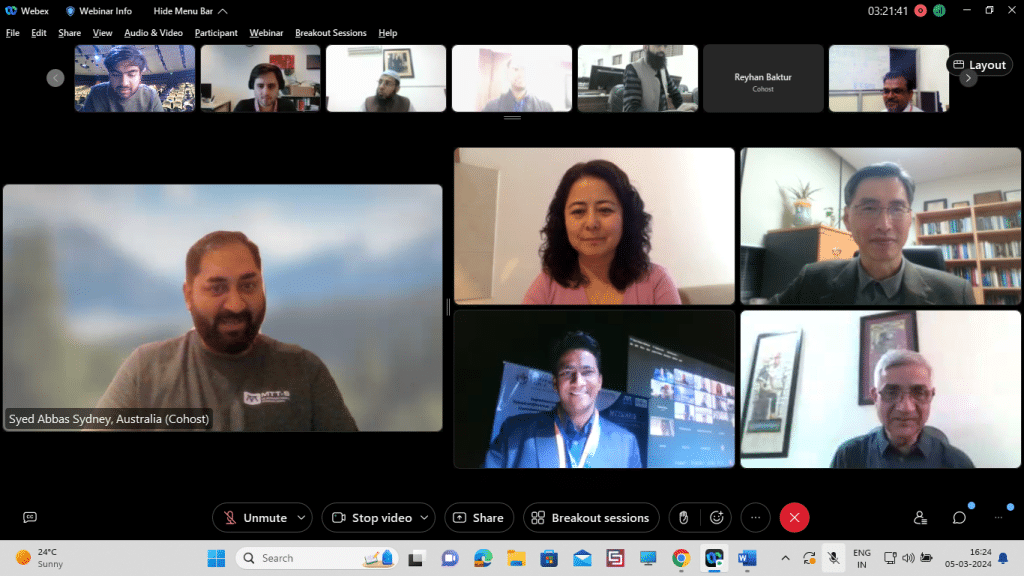
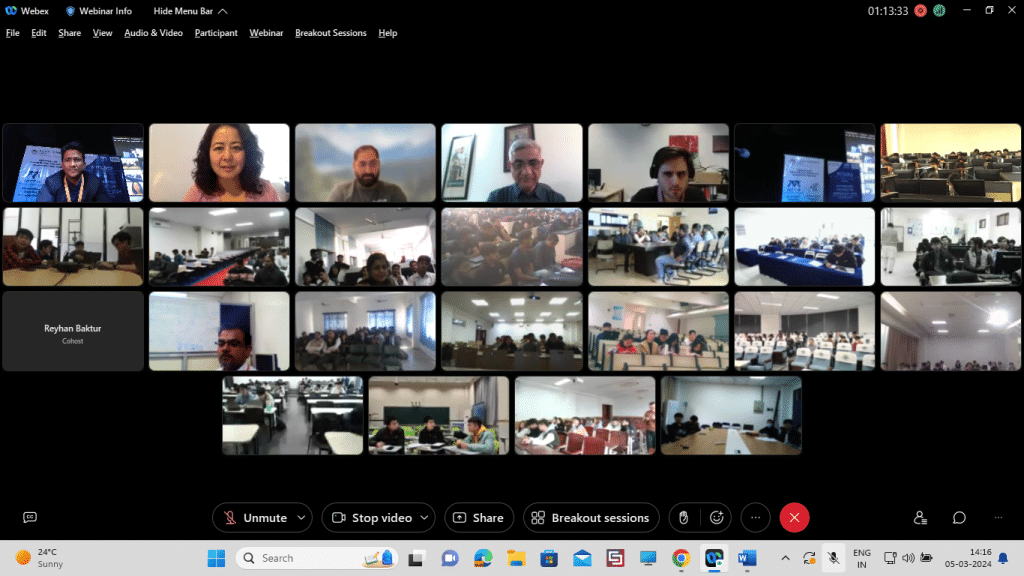
- The Talk by Reyhan Baktur:
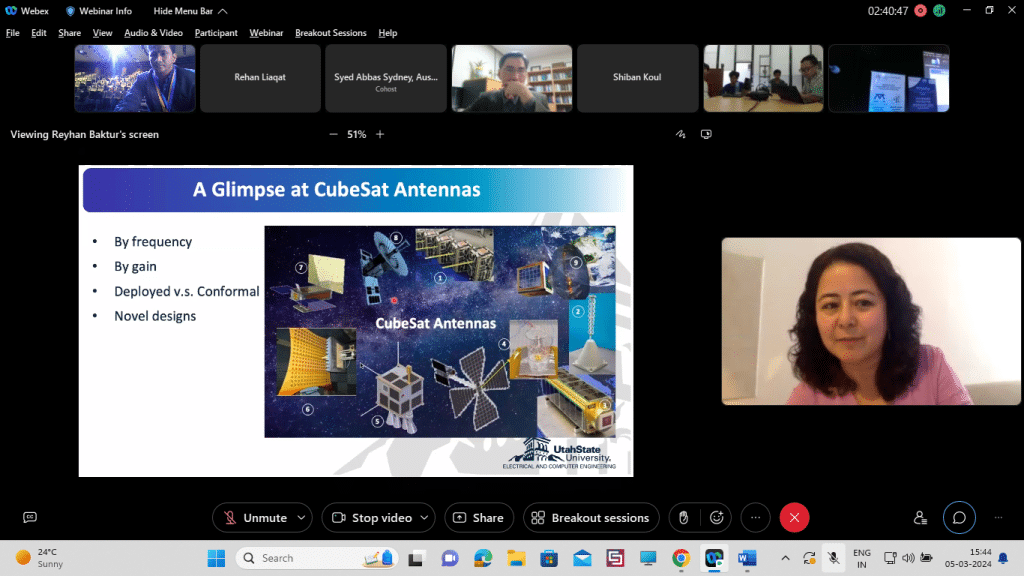
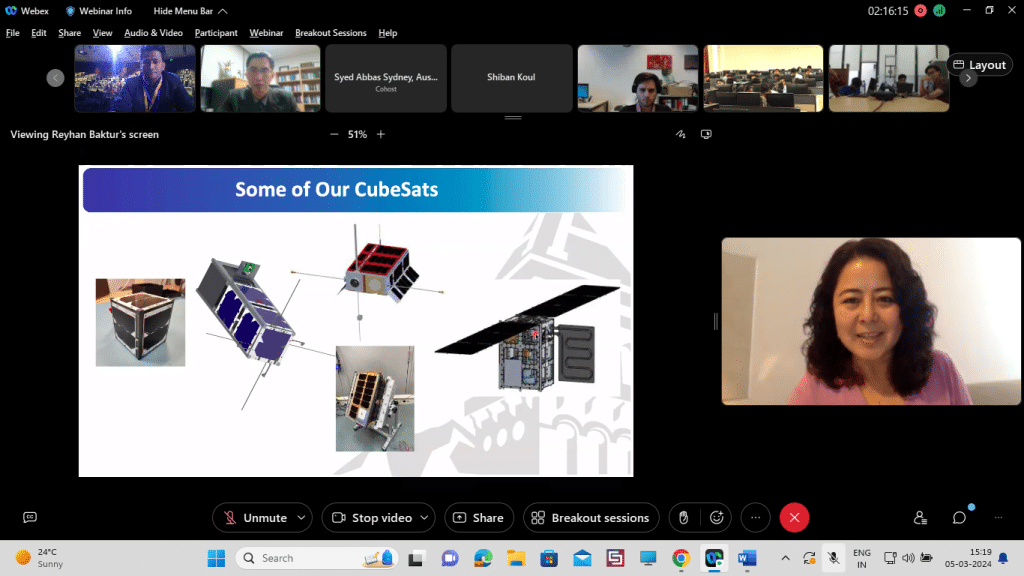
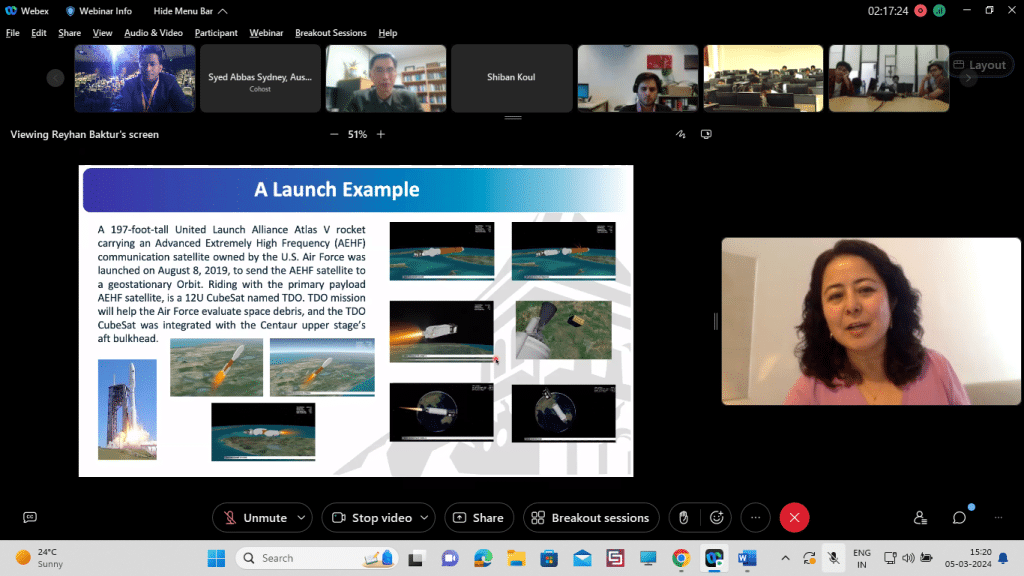
- The talk by Shiban Koul:
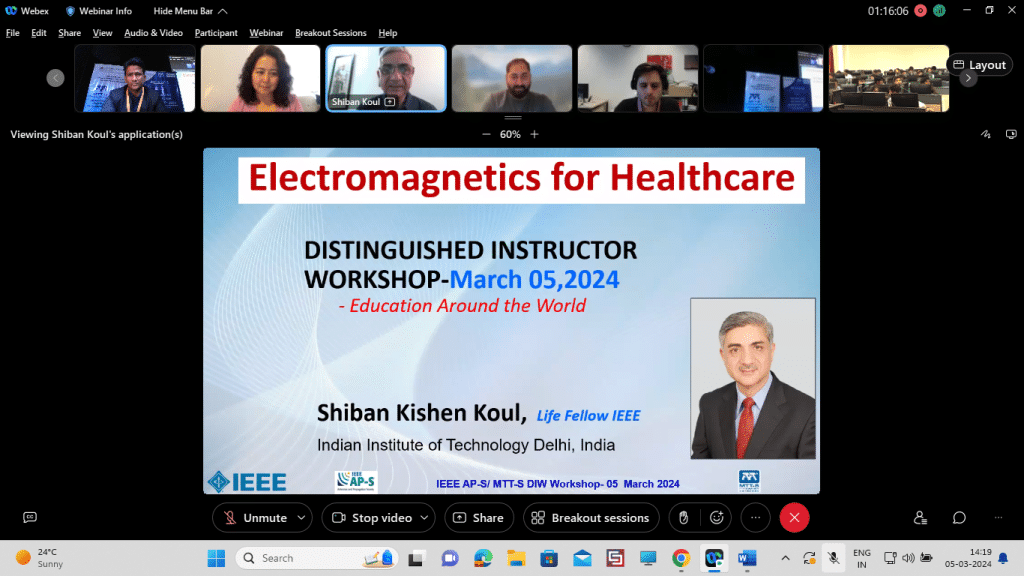
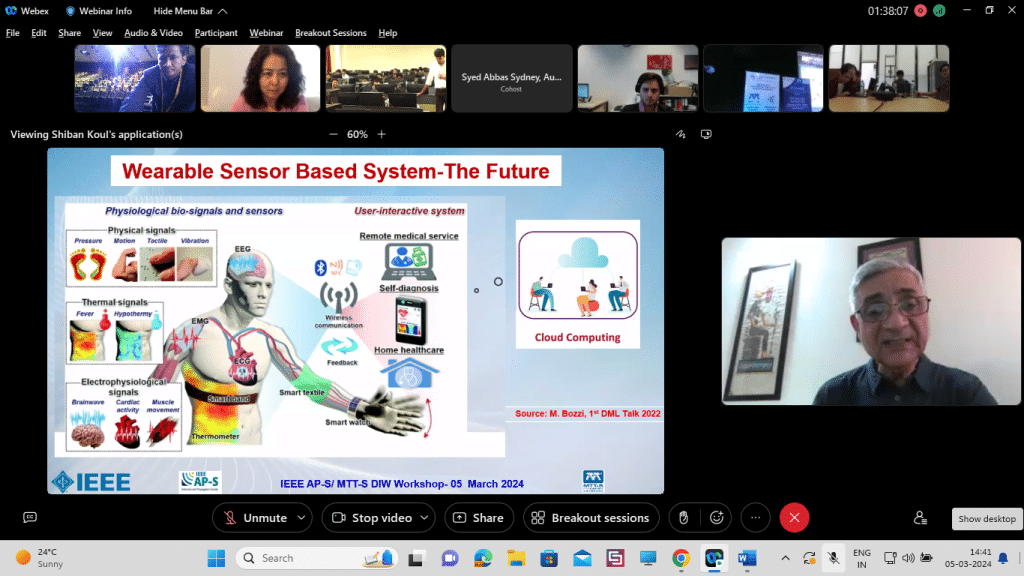
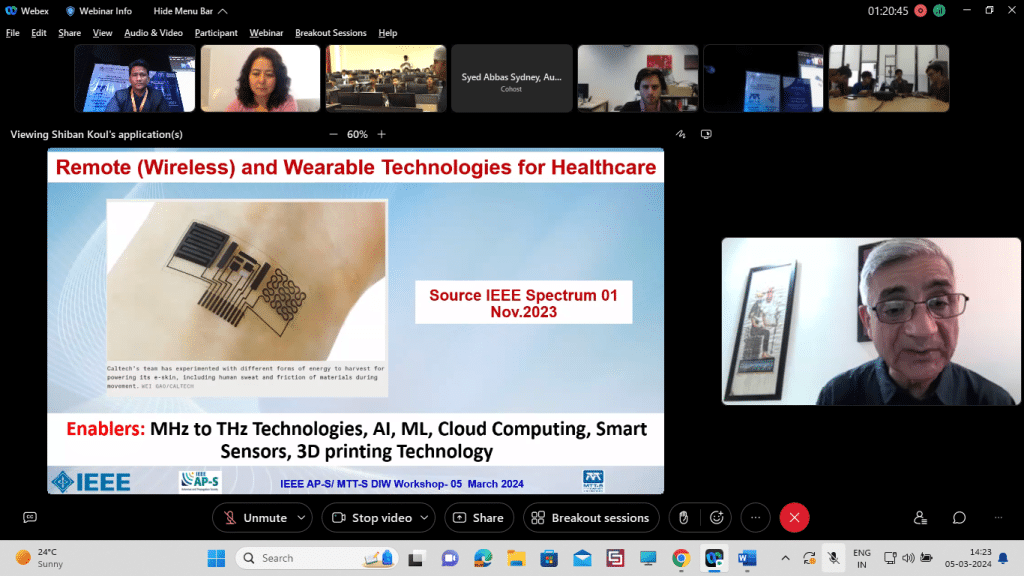
- The Talk by Jae-Sung Rieh:
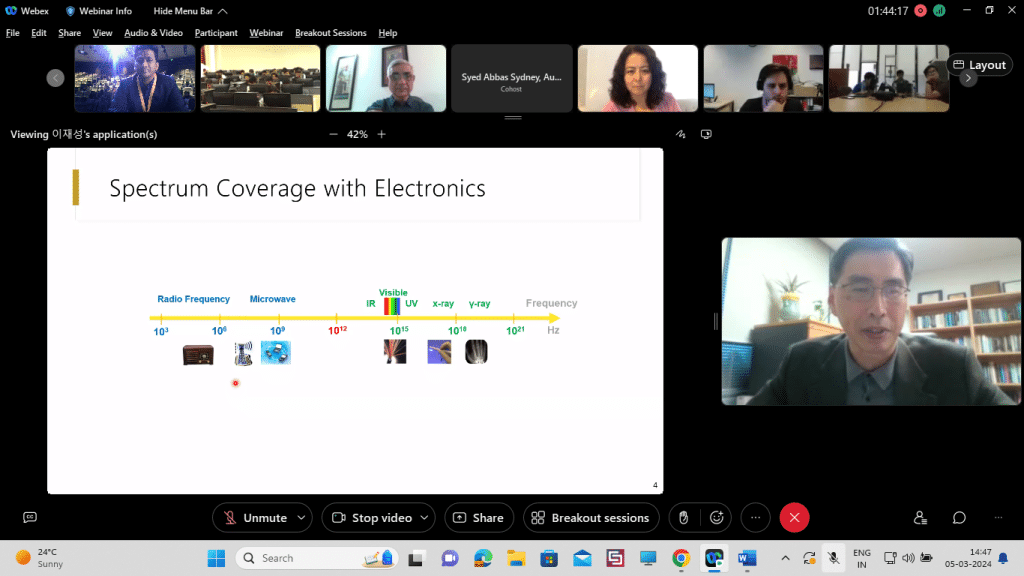
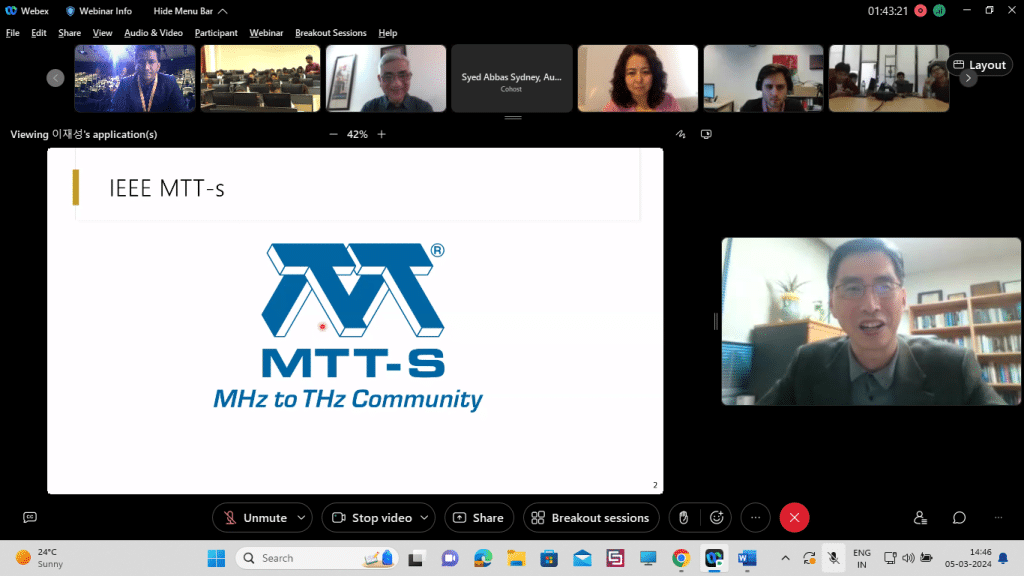
- The hybrid workshop from different campuses
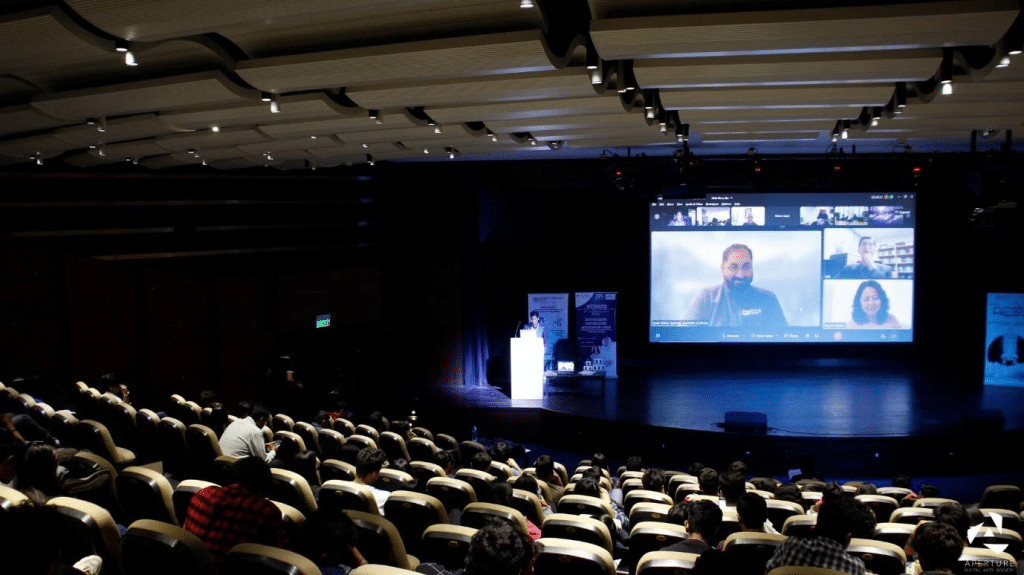
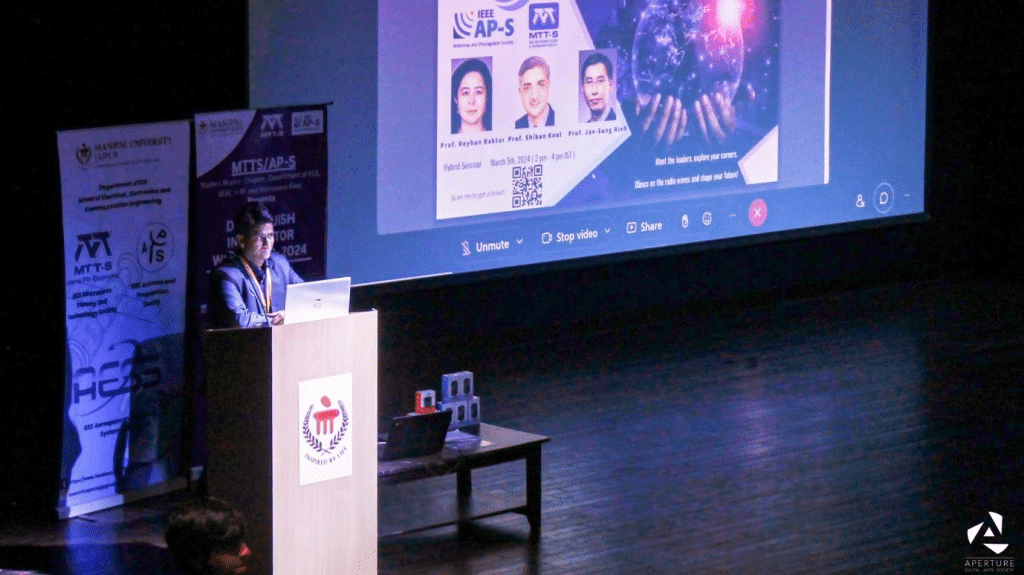
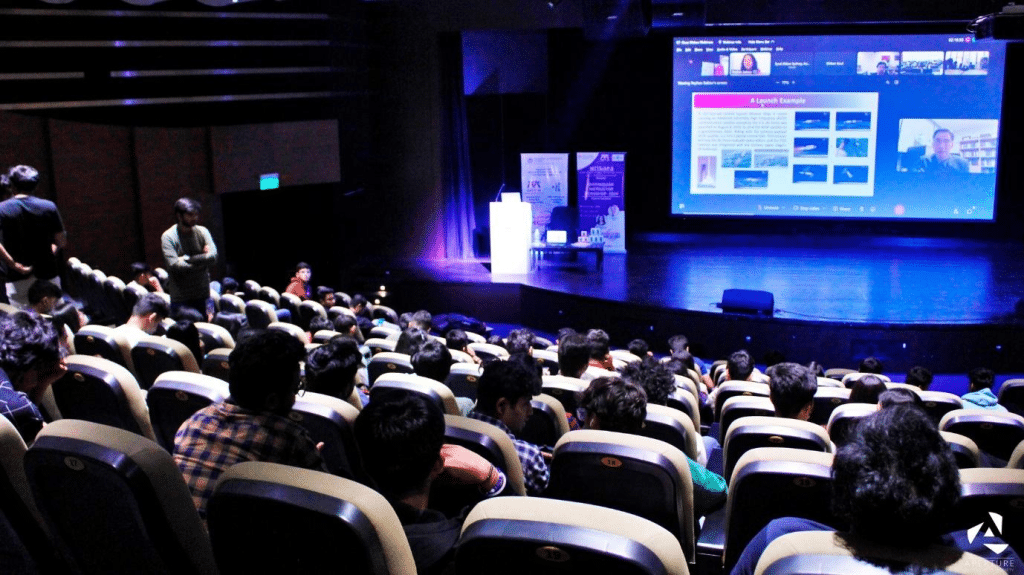
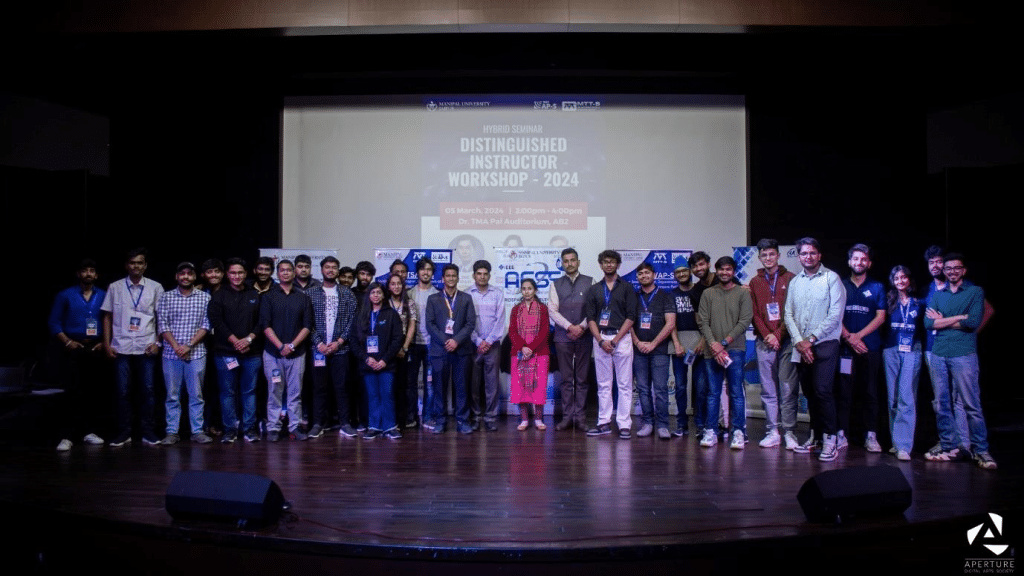
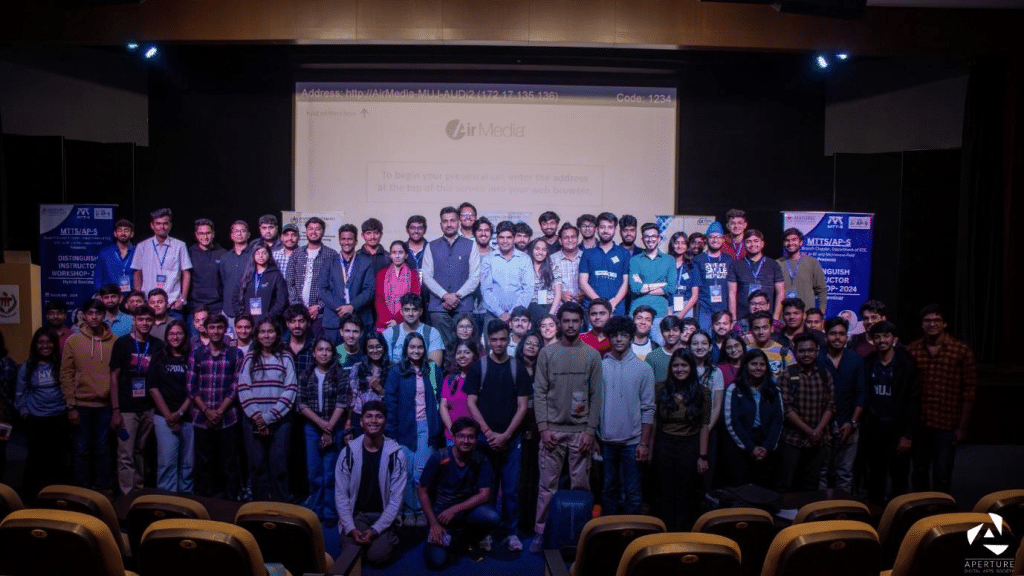
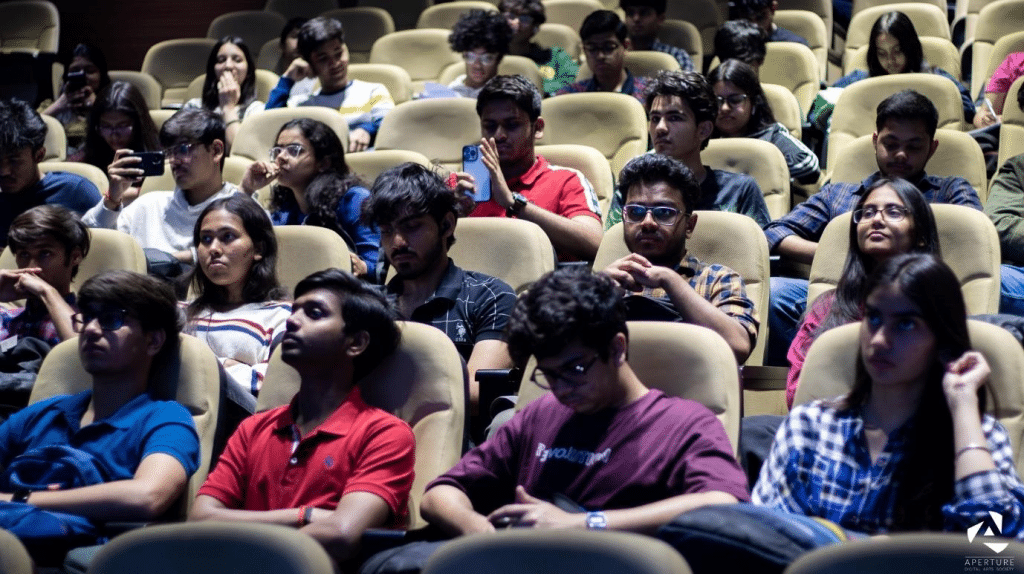
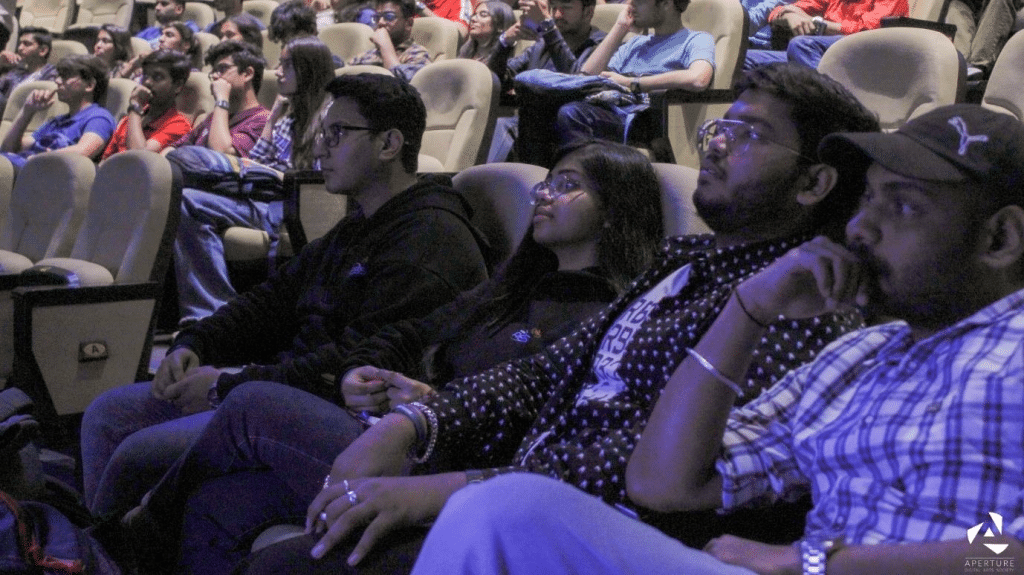
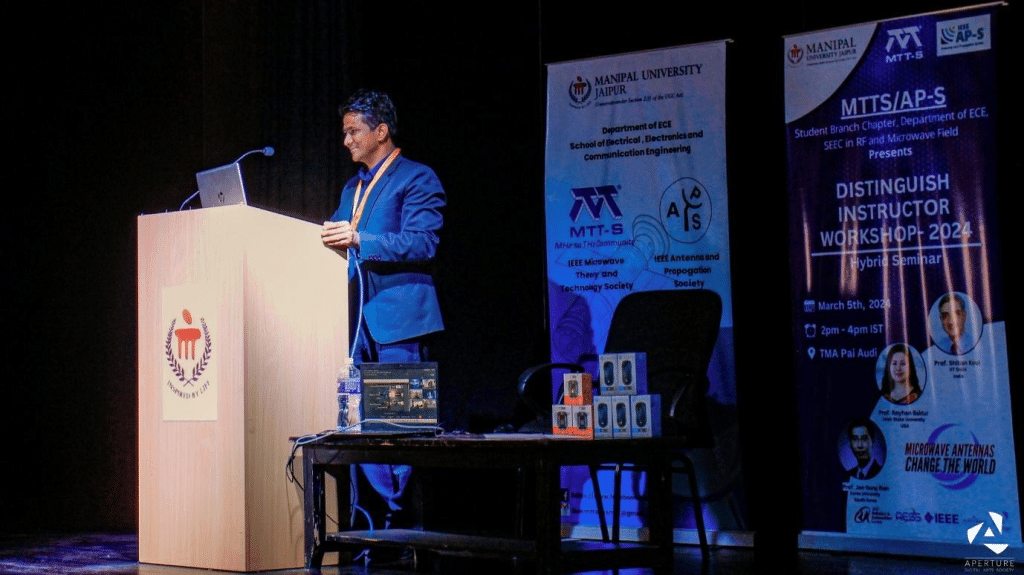
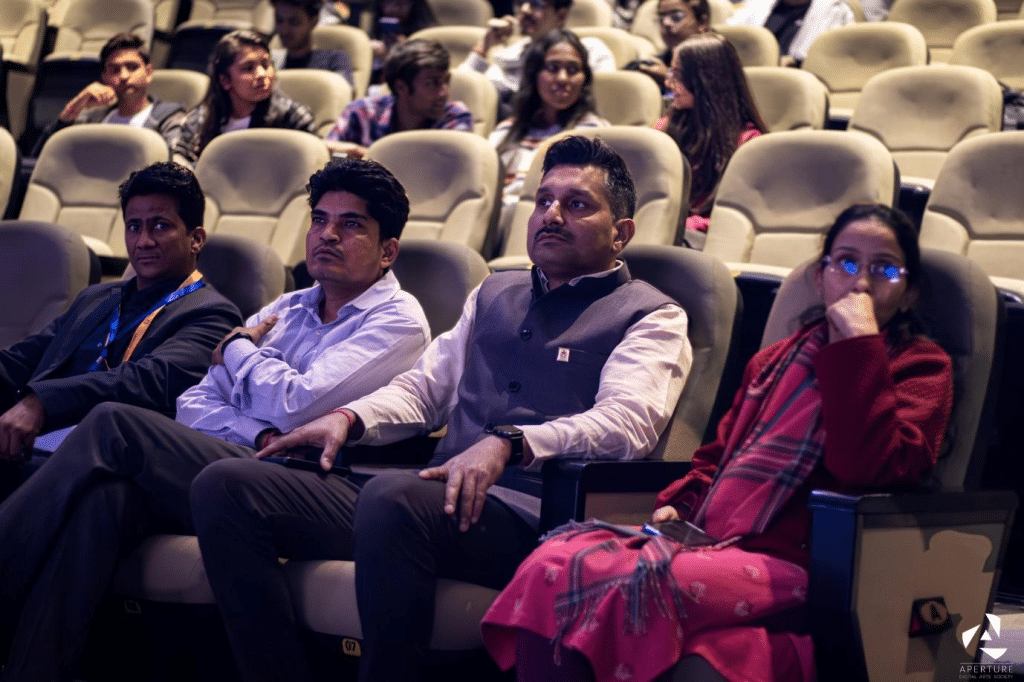
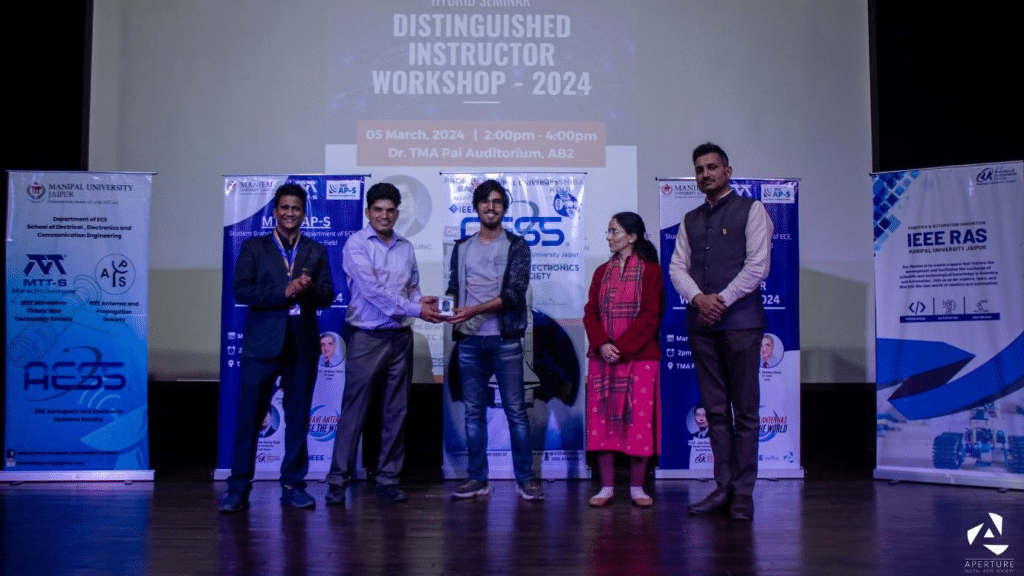
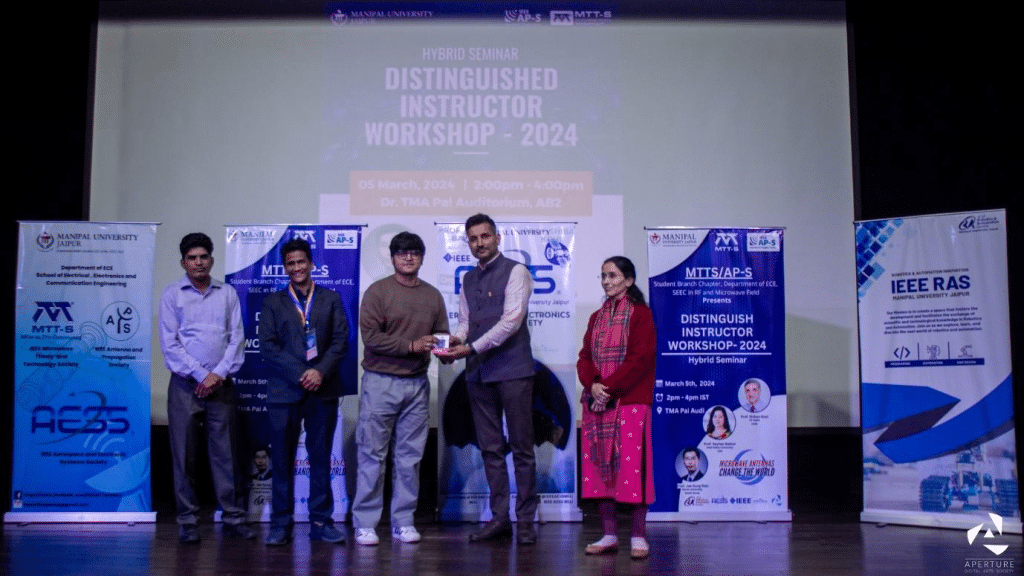
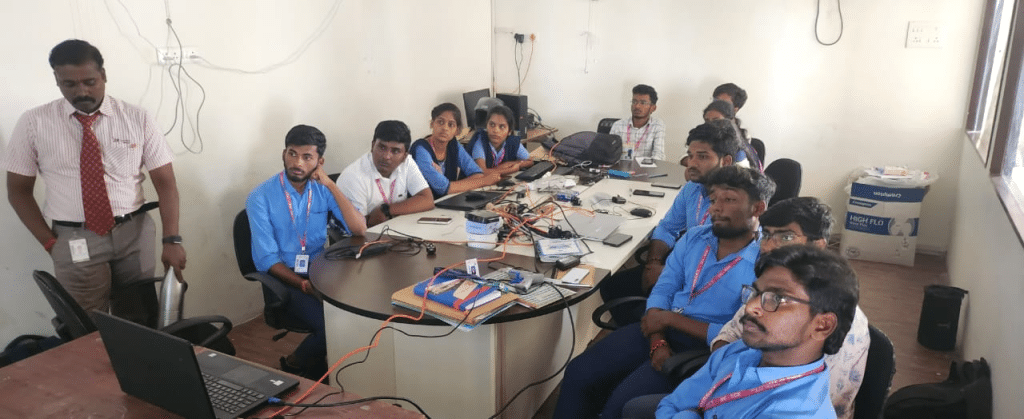
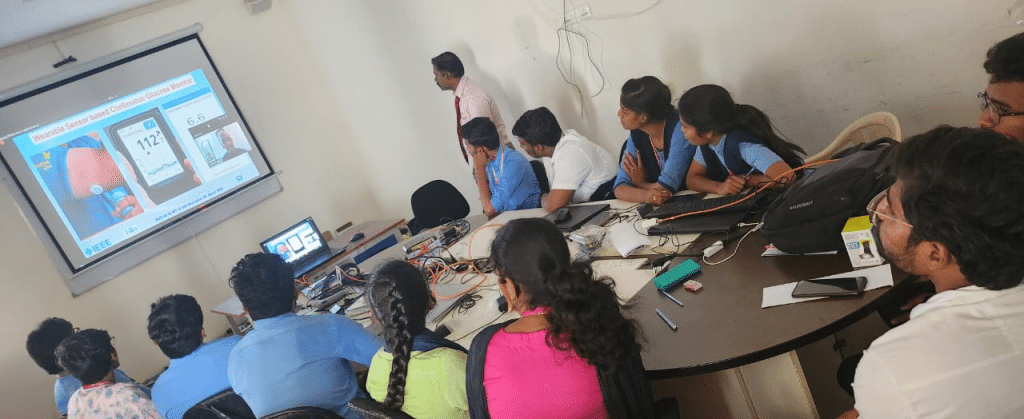
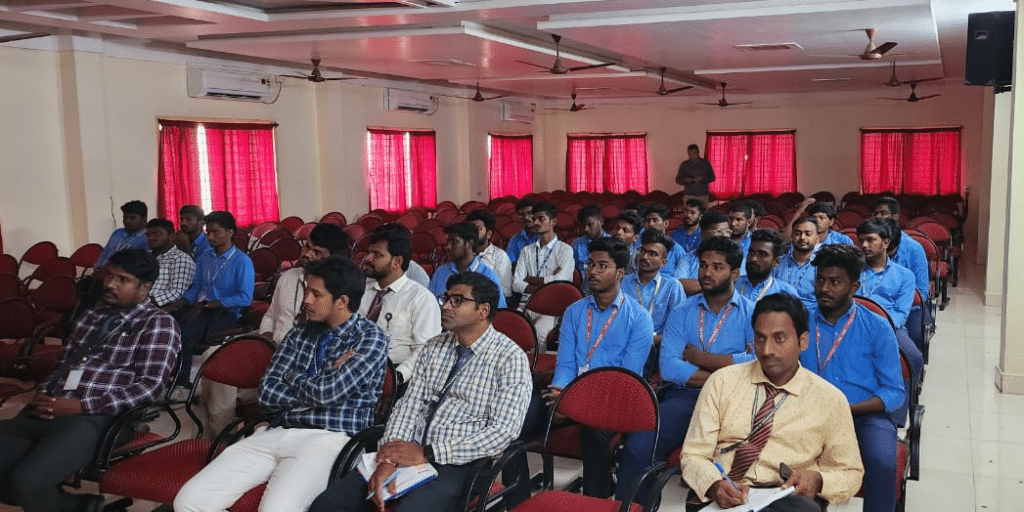
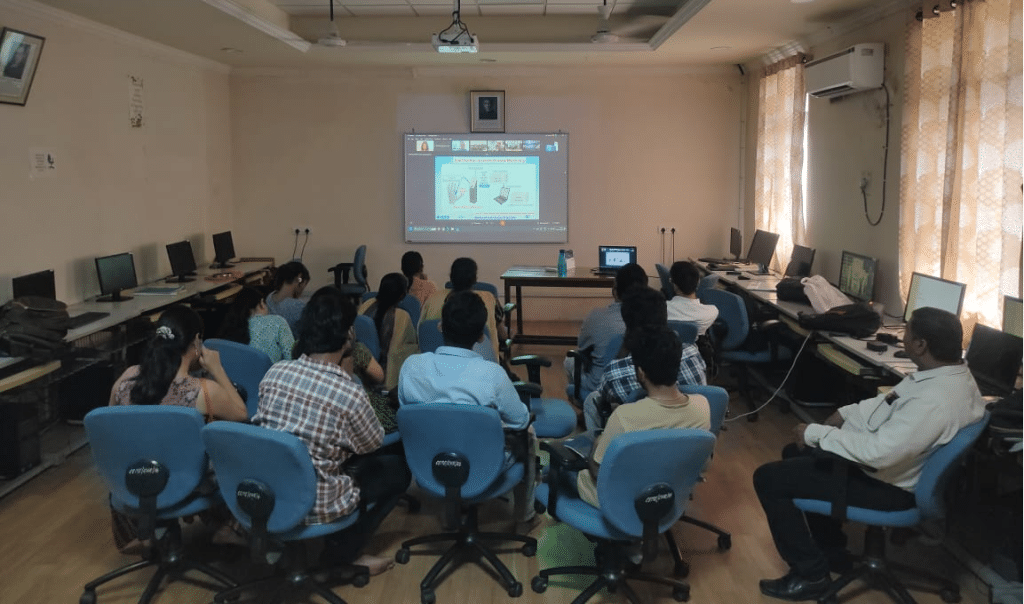
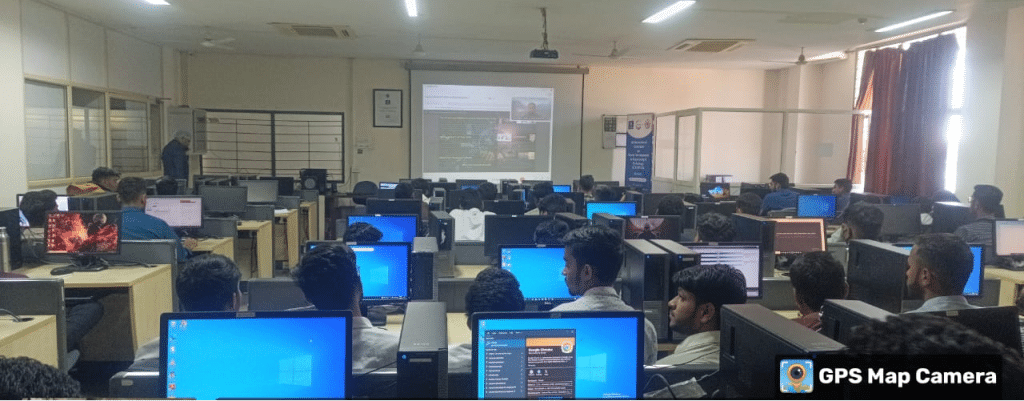
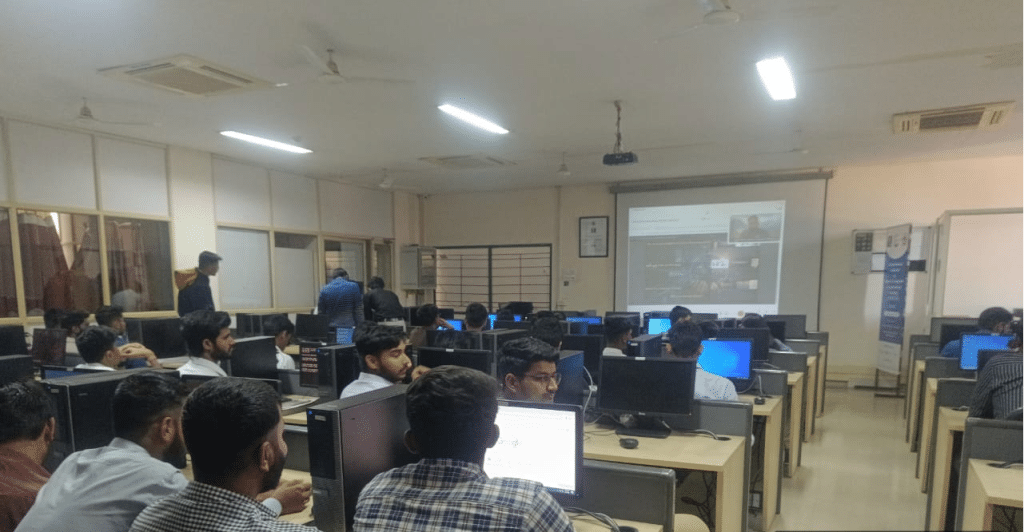
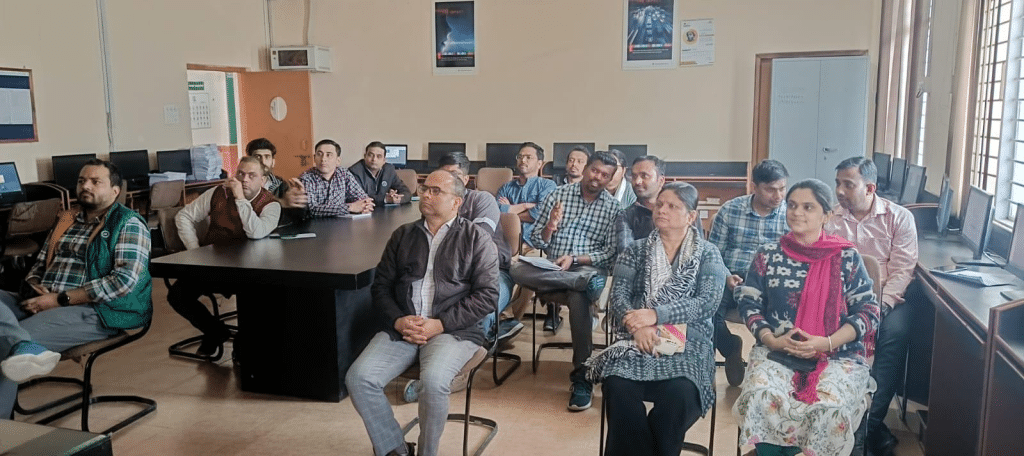
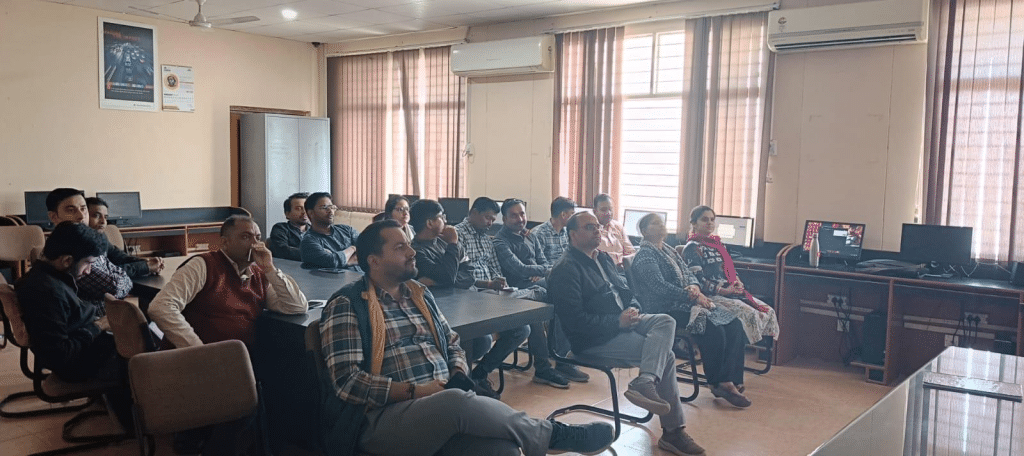
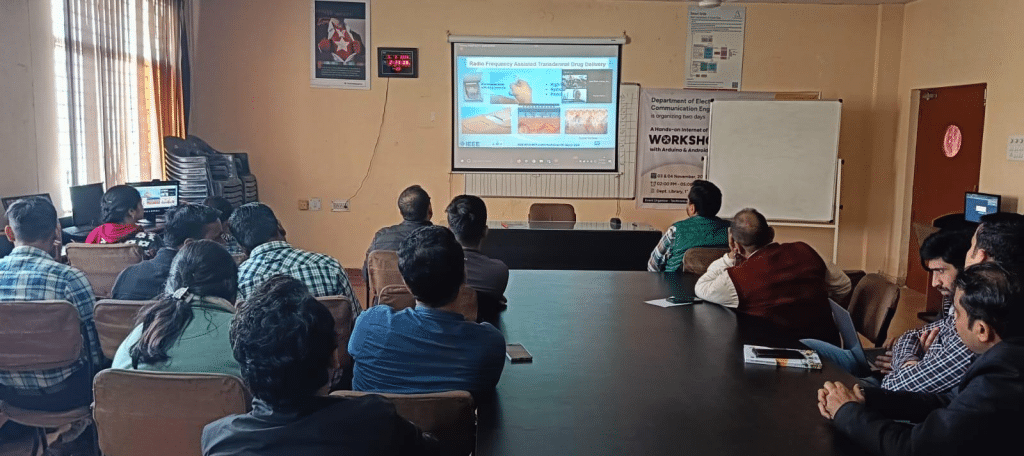
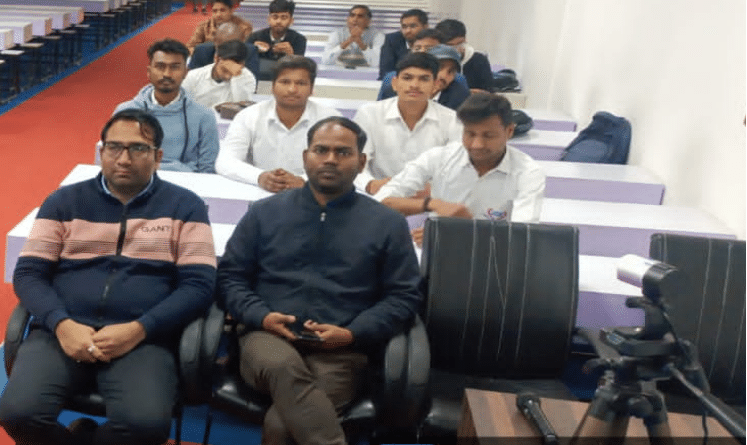
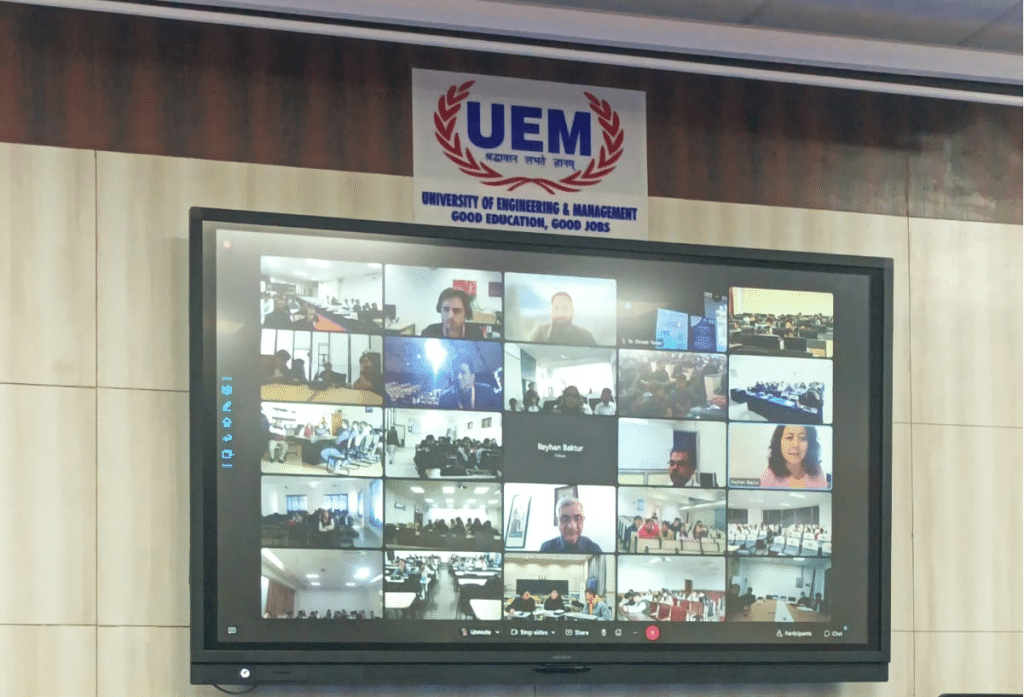
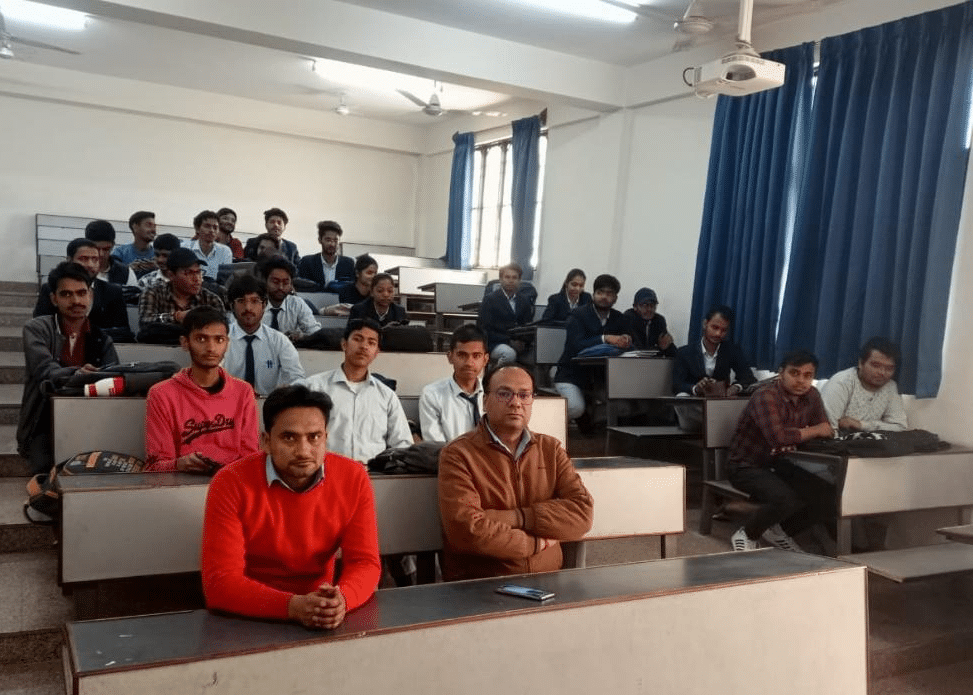
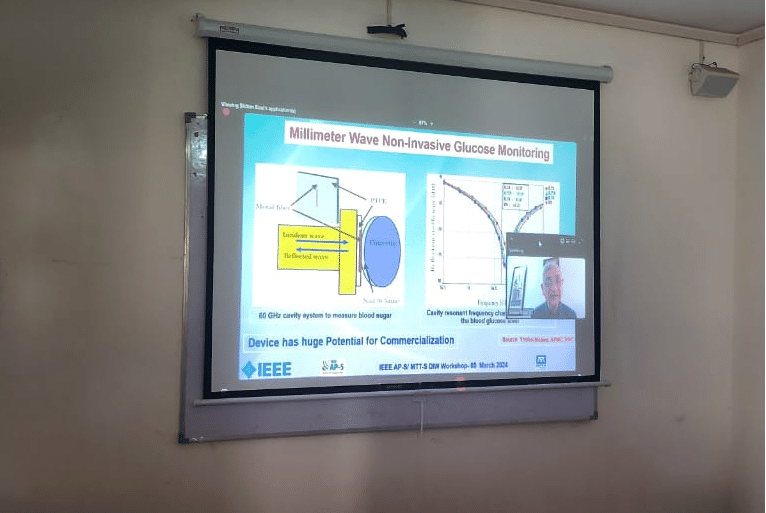
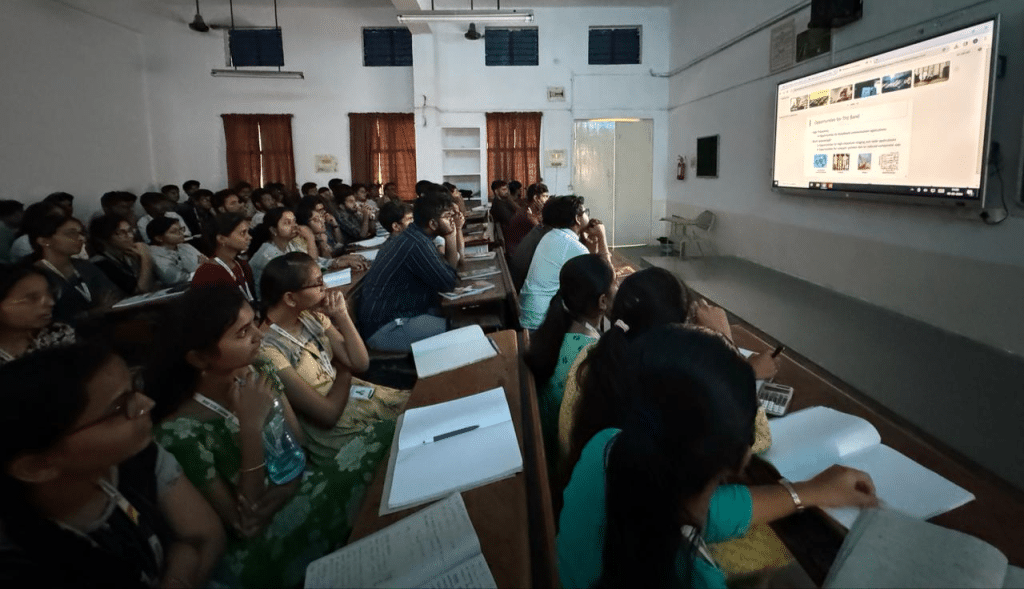
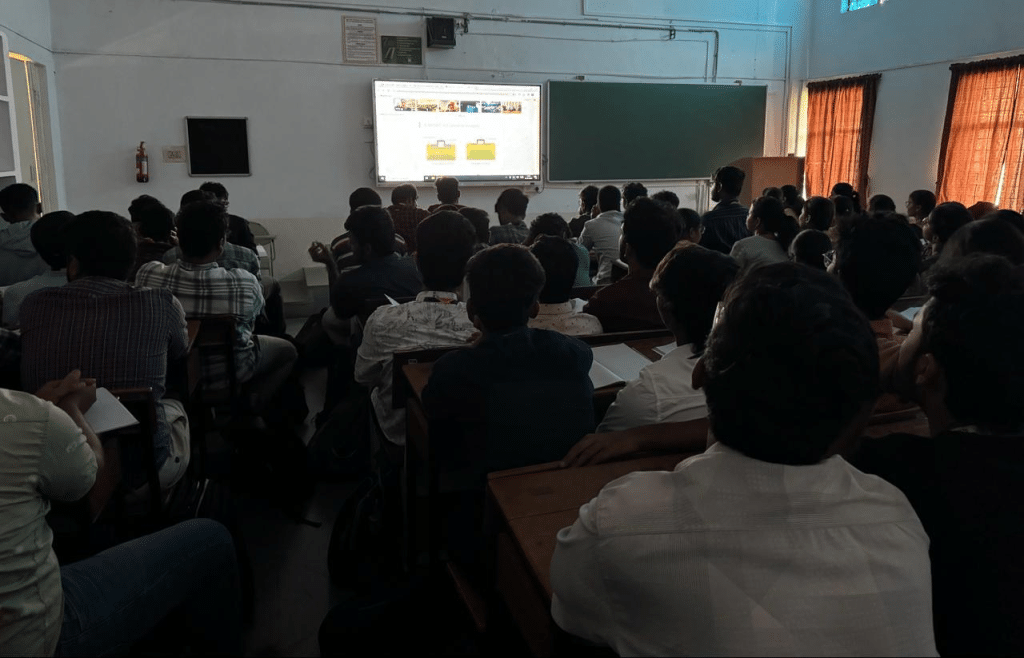
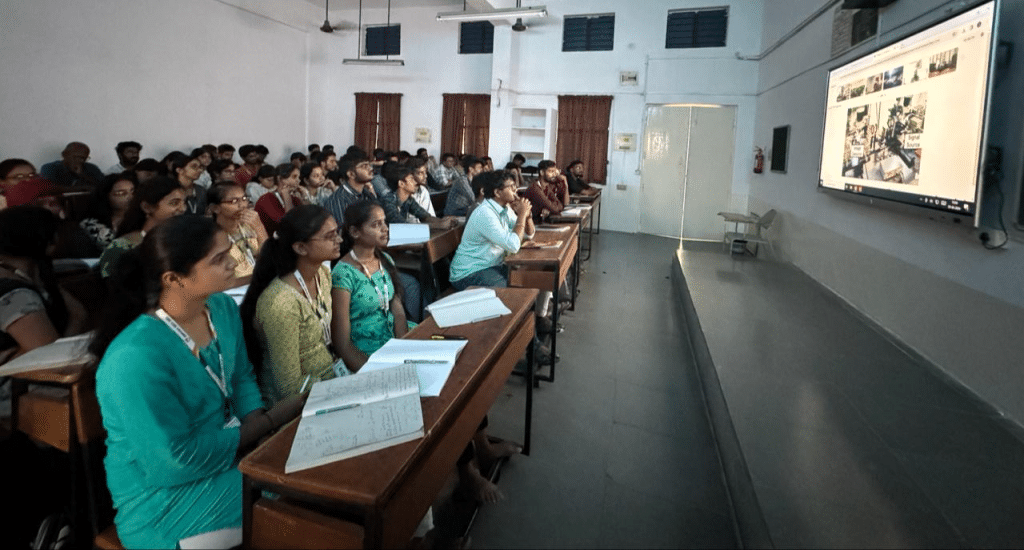
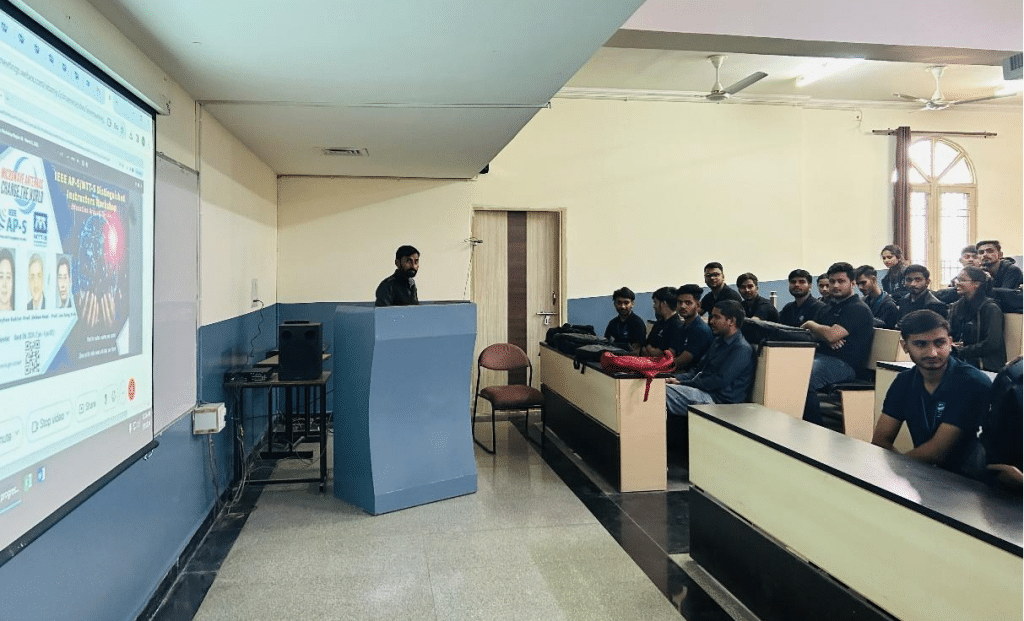
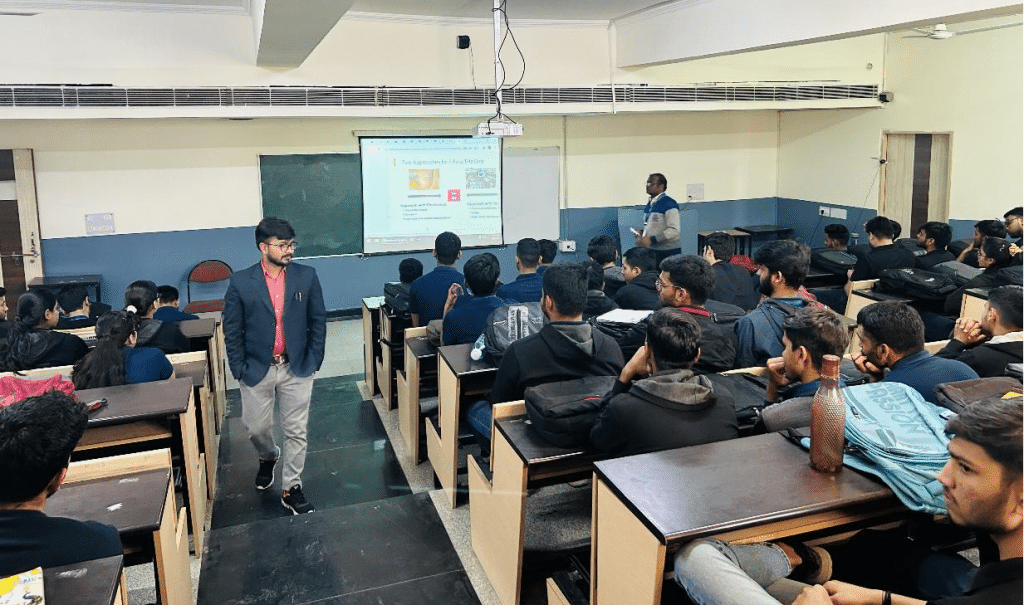
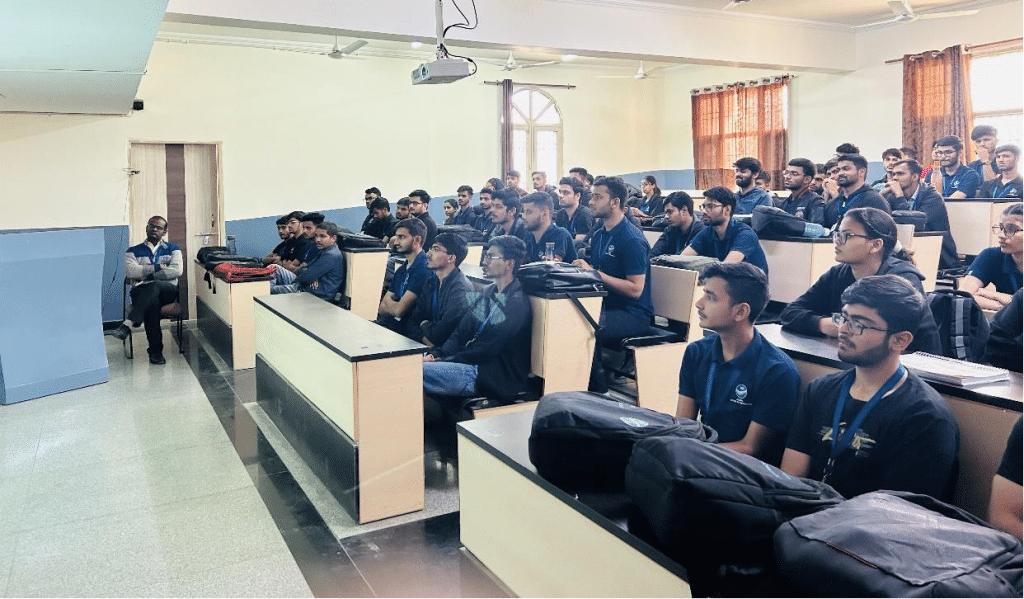
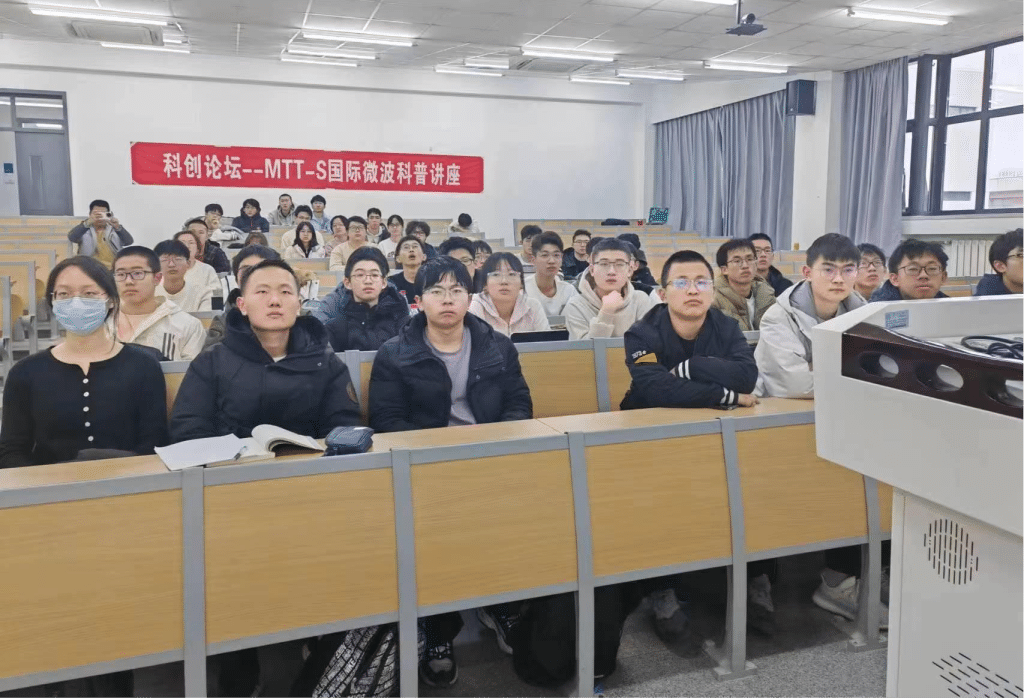
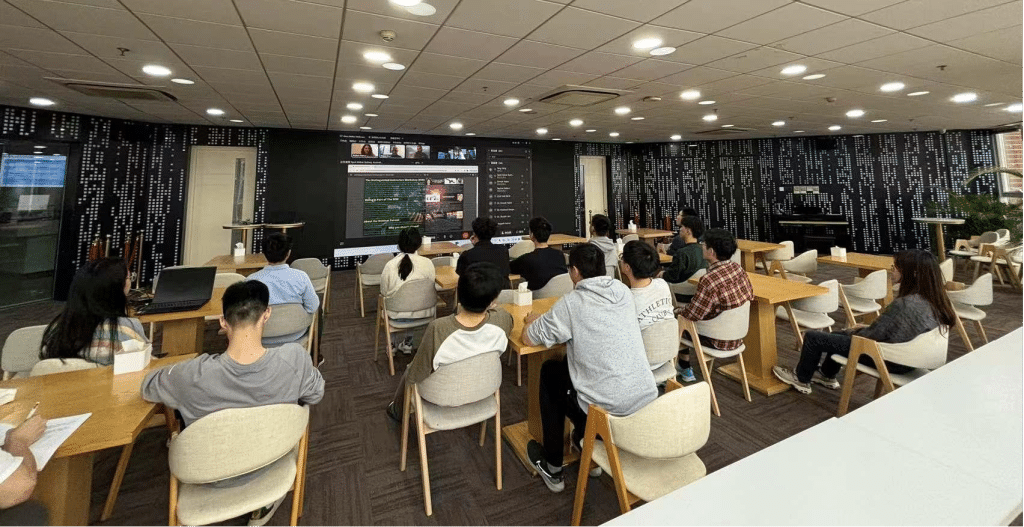
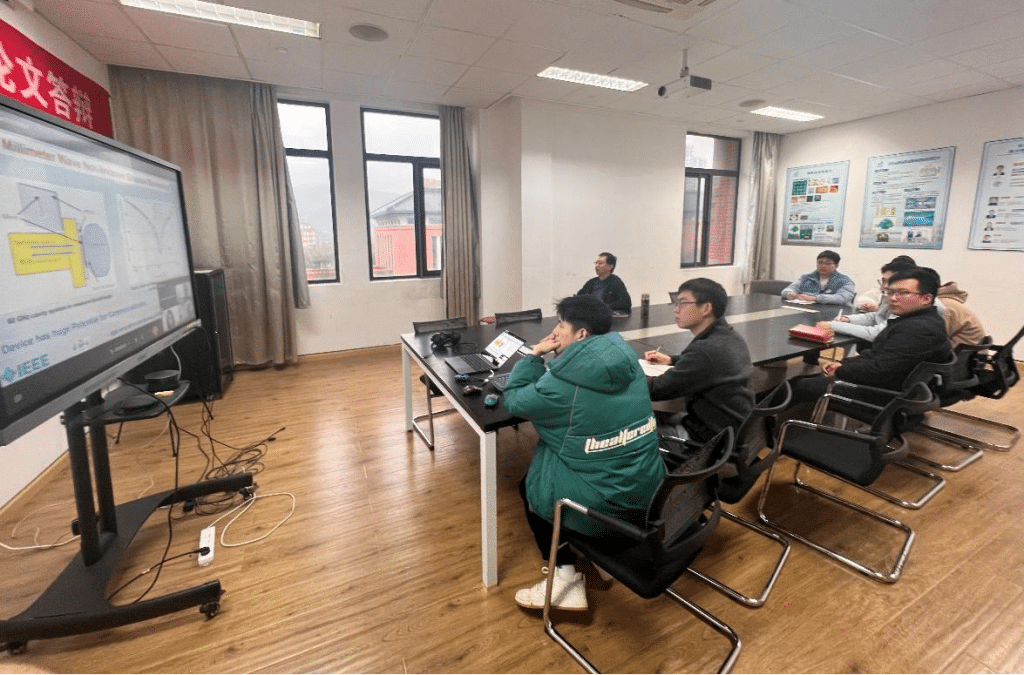
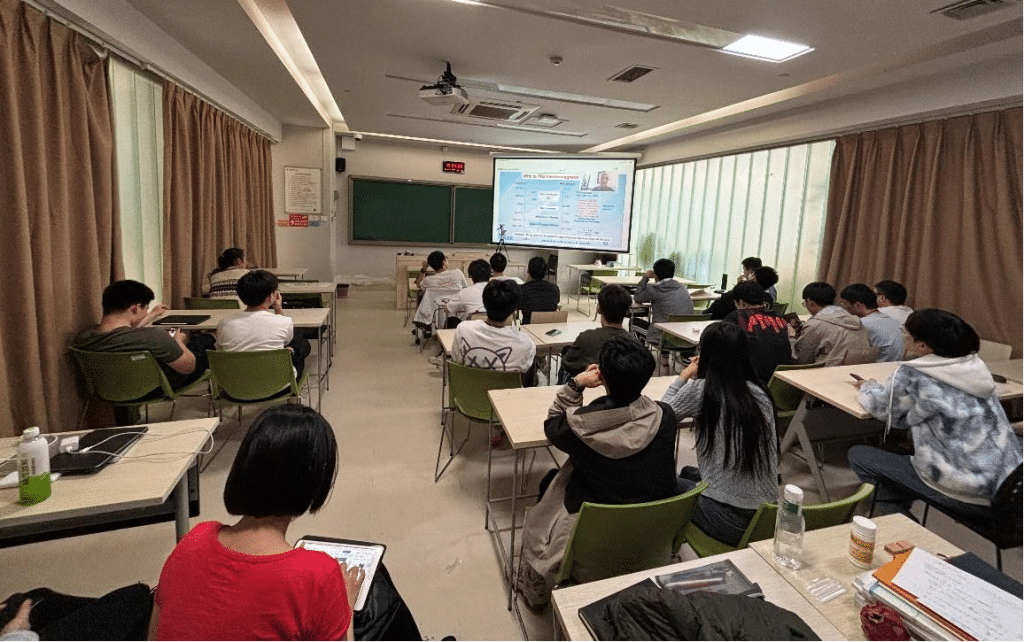
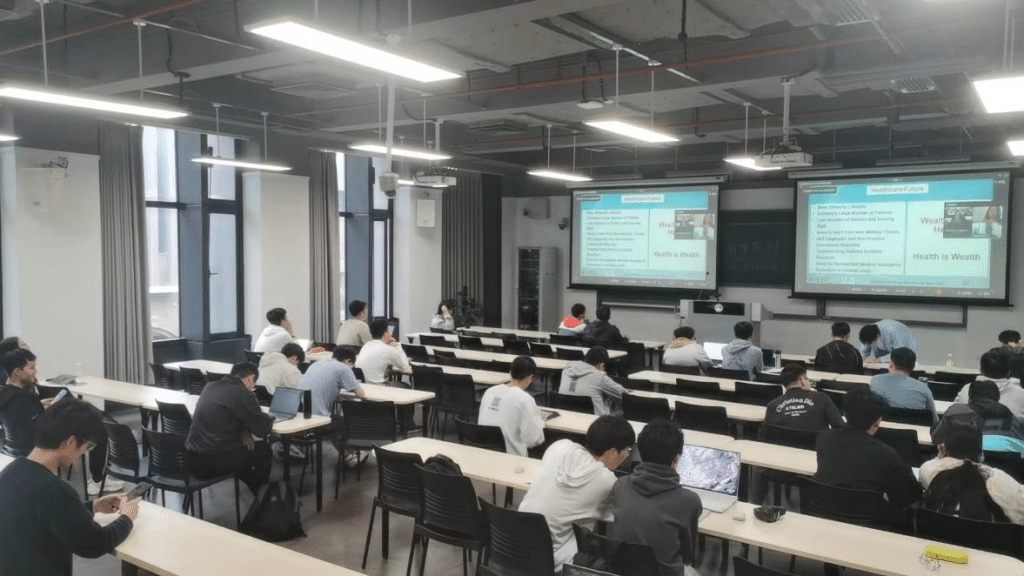
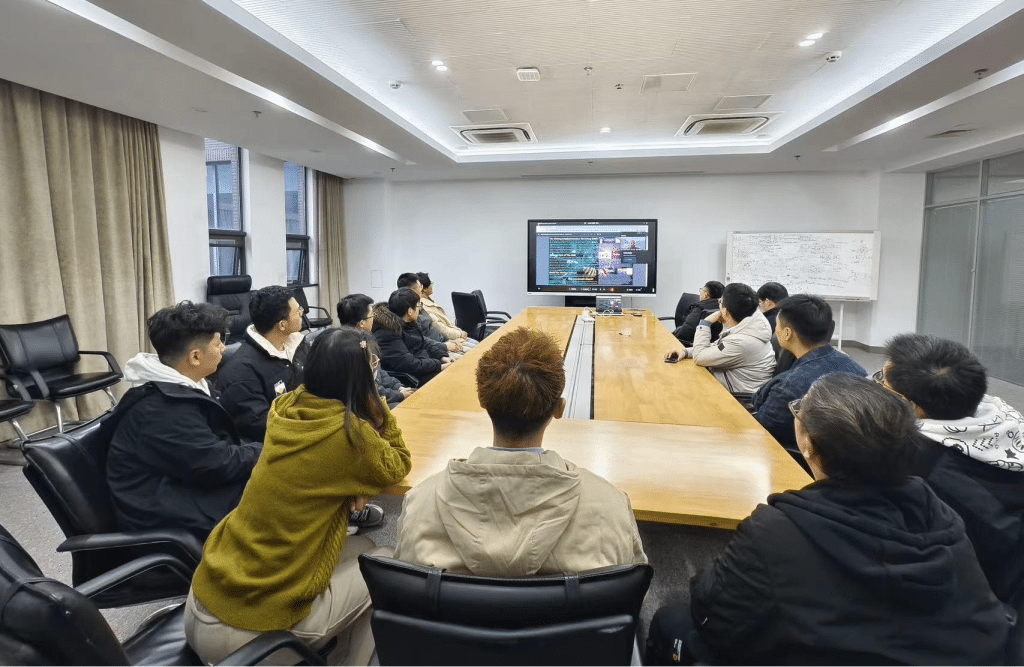
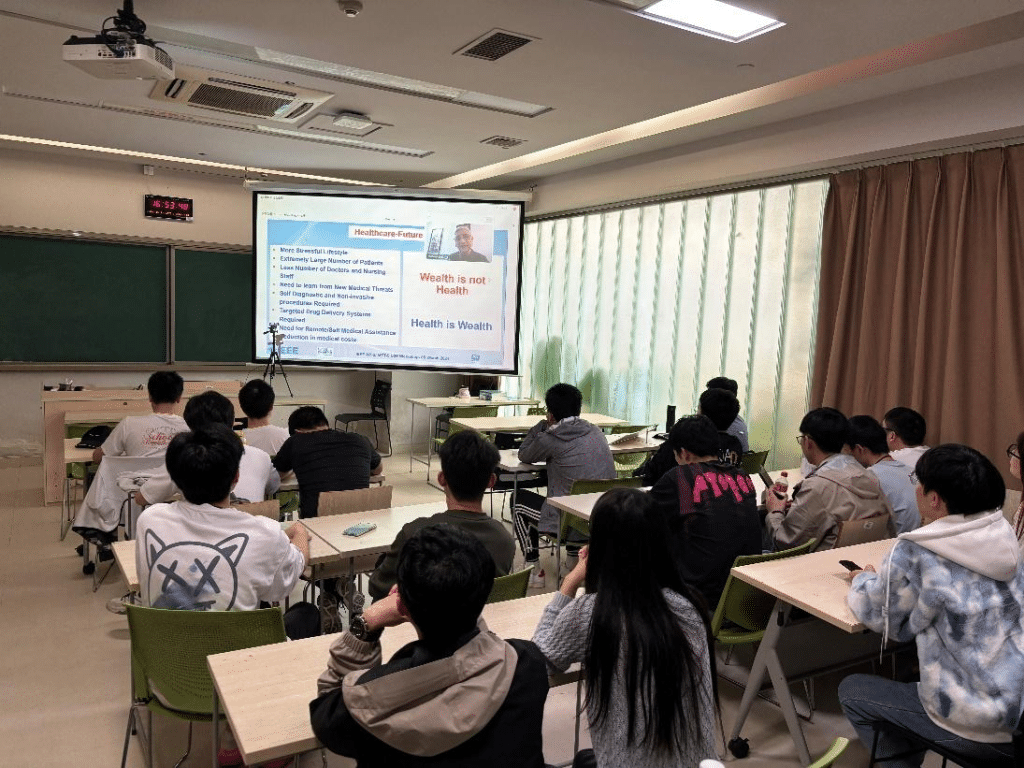
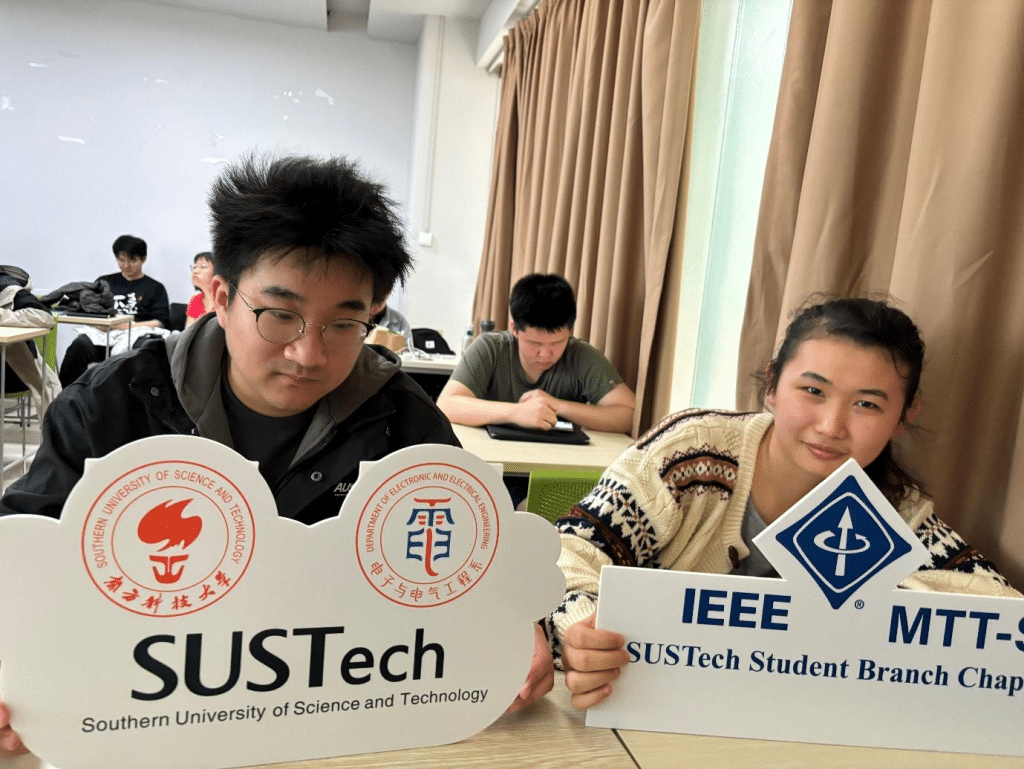
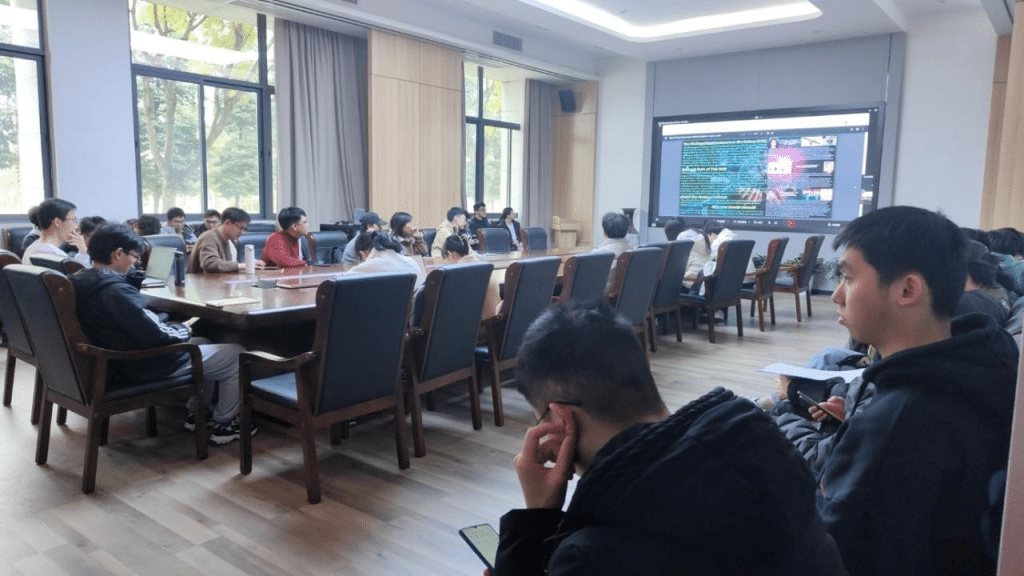
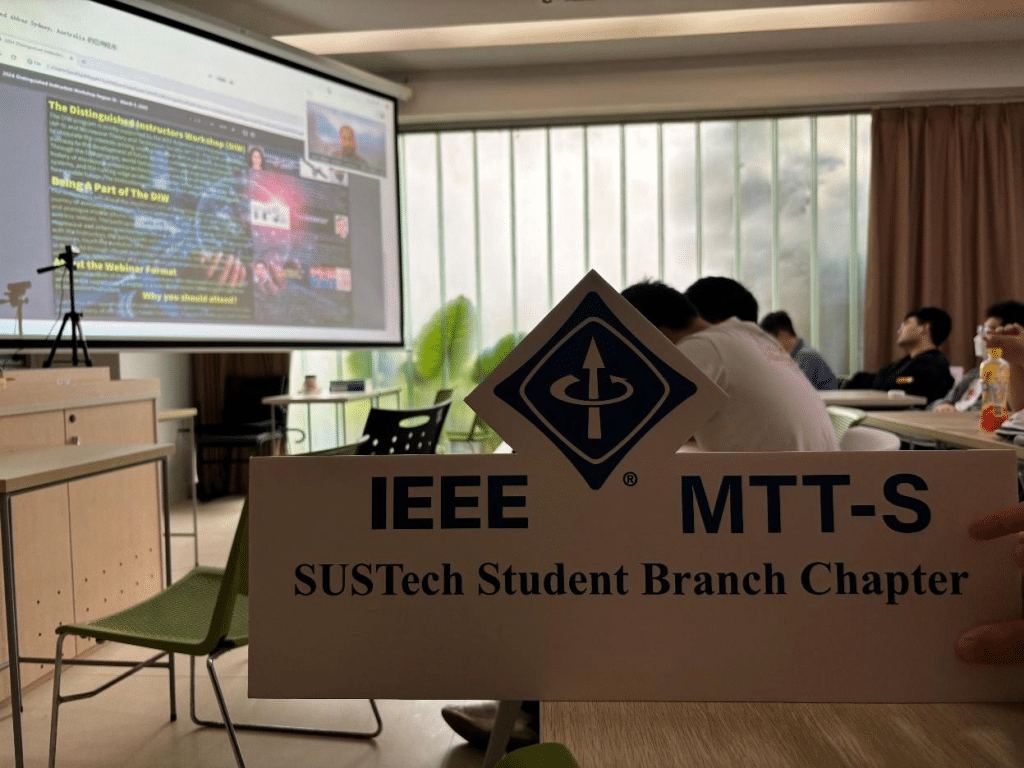

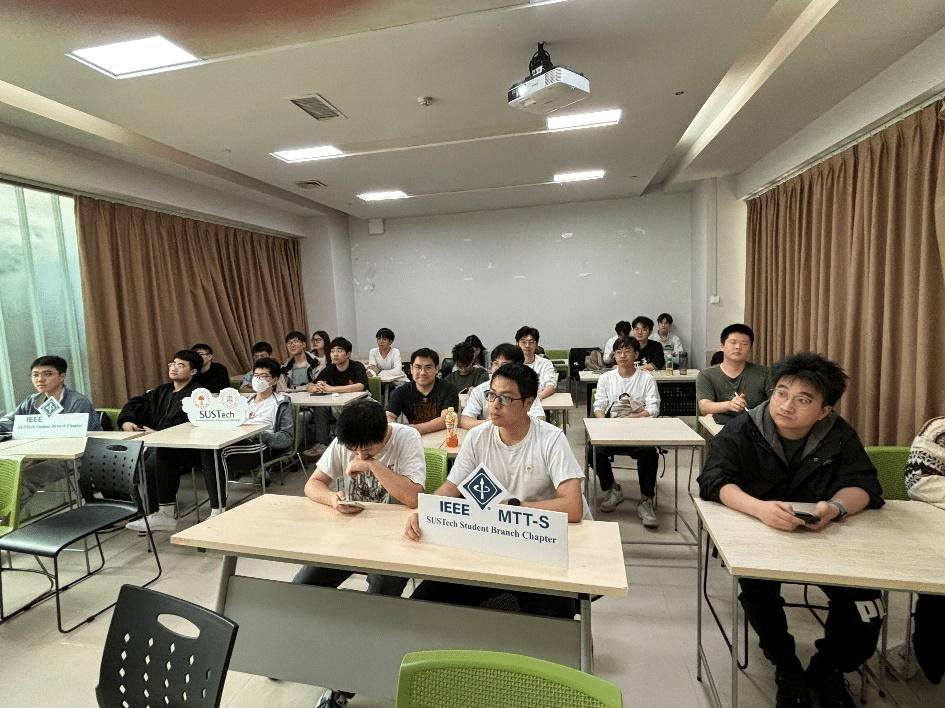
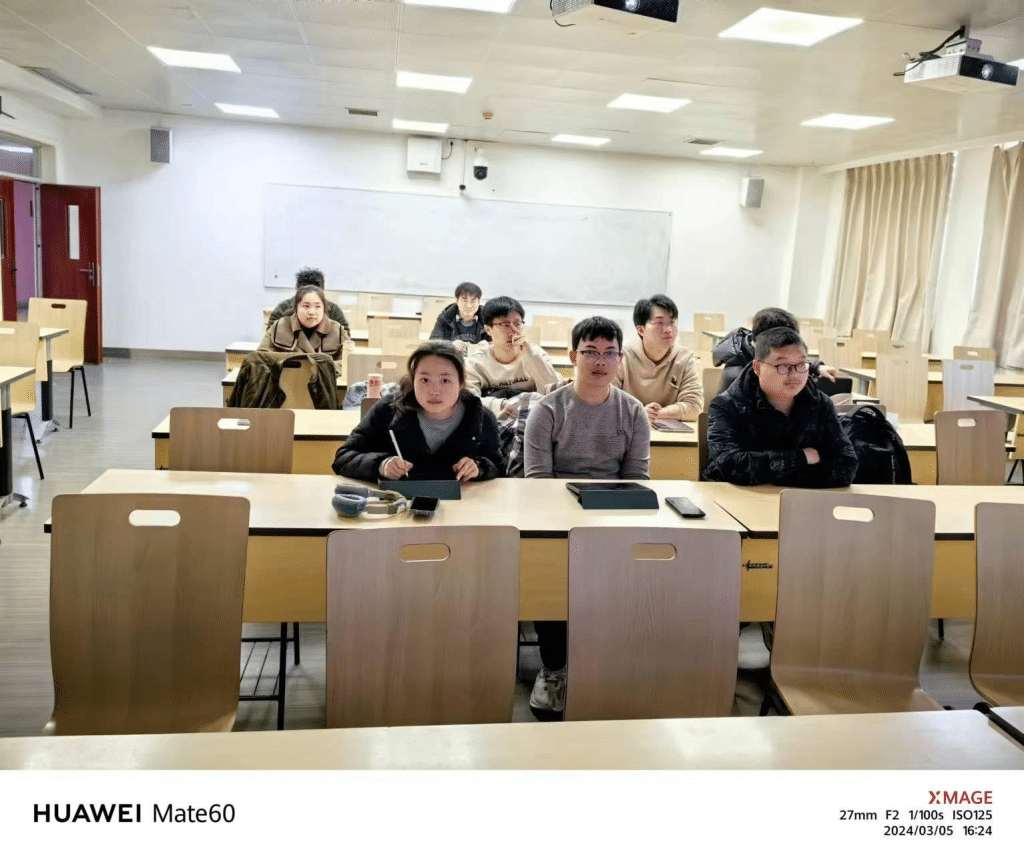
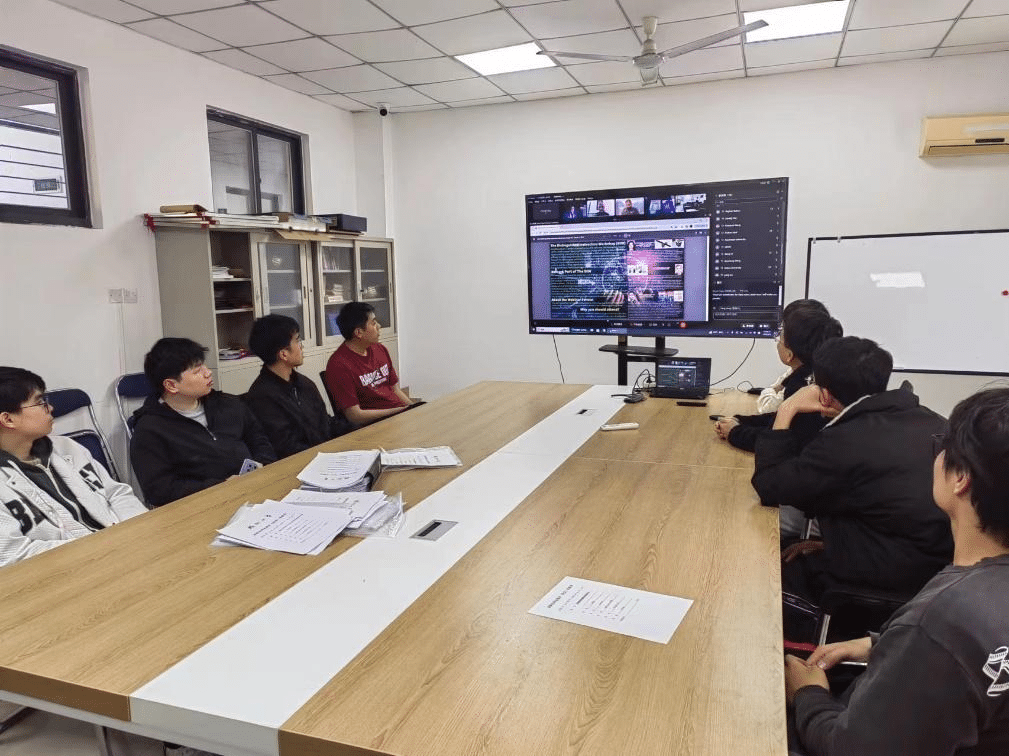
Screen shot before closing:
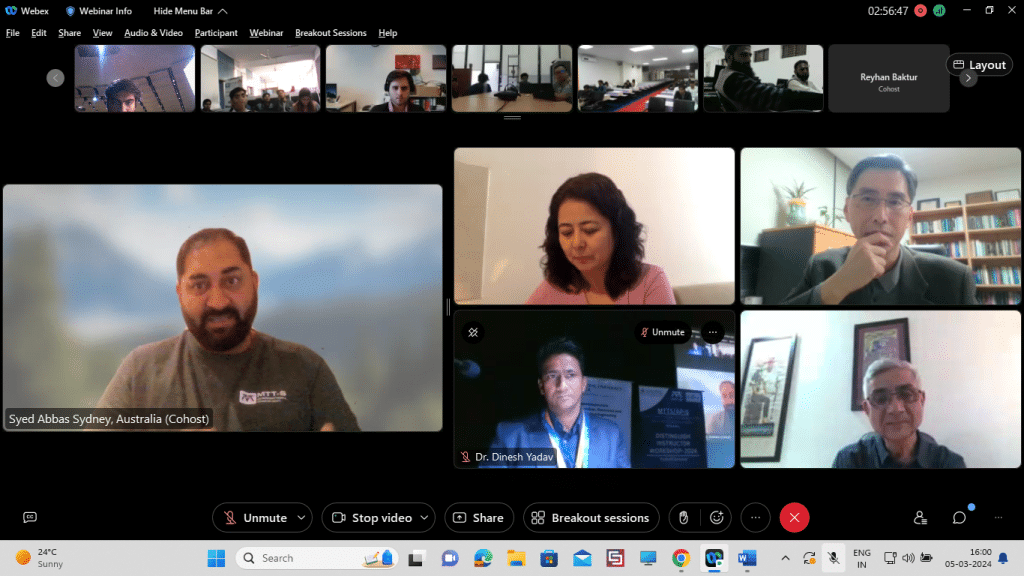
- Interactions between instructors and students during Q&A session:Dr. Shubhi Jain02:26:44Good afternoon sir. So my question is, what are the harmful effects of the high frequency in human human body.Dr. Shubhi Jain02:27:55Okay, thank you so much sir. Sir, one question is also sir, how can telemedicine access improve to health care and especially rural areas?Dr. Shubhi Jain02:28:09Send access in health in medicine, in medicine healthcare, in rural areas. Yeah.Shiban Koul02:28:15And basically as I said, you know, if you have a self diagnostic computer which will tell you, take this medicine and somebody delivers the medicine, you don’t need to go to the doctor.Syed Abbas Sydney, Australia02:28:35
Either the question can be asked by the student by themselves or any of the the hosts can ask. if you want to write it in the chat, you can write it by the time you’re thinking, there is a question in the chat. I will just go through that one. As you mentioned in the beginning that there are satellite below a hundred grams Satellites. What are the practical applications of these satellites as they are such small magnitude? How do they perform their task and also store systems to maintain their trajectory?
Reyhan Baktur
02:29:14
A very good question and in fact, I, that’s one thing I realized I didn’t get a chance to say. So, so the small satellites that are several use of small satellite, one, ok, so one is one use is for larger satellite.
Reyhan Baktur
02:29:34
You are putting lots of instruments, right? And you launch and that’s a lot of money, and if something doesn’t work, then you really have like it’s just a very hard broken moment. That’s a that’s a lot of money you put in there and if something fails, it’s bad. So therefore, with the smaller ones, one, one very important thing for the.
Reyhan Baktur
02:29:55
The small satellite is to test the novel instrument. Before you put anything, before you put anything in space, you test it and you test it cheaper, I mean, even though each one of these cubes are not so cheap, they are a lot cheaper than bigger satellites. So we can do technology demonstrations, so the so the term that is being used is.
Reyhan Baktur
02:30:16
Technology demonstration. So earlier if you remember in the one of the picture I showed the deployed antenna, that’s an, that’s a sa jpl’s deployed antenna and I, and of course I wish that’s all from our group, but so so so that one before being used to other on other.
Reyhan Baktur
02:30:36
Other missions is tested on the cubeset. So one is one is to test tech new technology, new instrument. A tool is, again, a one big satellite can fun can can can operate on many functions, can do many things.
Reyhan Baktur
02:30:56
Now, if you divide the many functions into like ten small satellites and that each of them carry one of the function by doing that again, the entire cost is cheaper, and if one function failed, it’s just one cube set might fails, you can replace it with another instead of the entire whole thing if something if something doesn’t work, then the repair and replace is gonna be more expensive. That’s that’s a second. So a constellation of the small satellite to replace a big satellite and Starling is a good example, right? Instead of like, like a big, like one big satellite that does all the real, it has a string of many small smaller satellites. And, and the third thing is for very expensive large spacecrafts such as international space station or chelescope, you can send the small cube satellites to monitor them, to monitor the health of a big one. So, so by doing so, these.
Reyhan Baktur
02:31:57
These are the main interest and usage of these little cube satellites and then you said how do they perform the tasks so yes. So, so the challenge here is the batteries will be smaller, the receivers will be smaller, everything will get smaller so that does a link into our second keynote speaker.
Reyhan Baktur
02:32:17
Right, everything in the higher frequency and smaller like develop development in semiconductor etc. So that’s one direction to go and I trust that some of you will be working on that to make it smaller and let’s see what else. I think that’s yes, that’s pretty much it. So, so.
Reyhan Baktur
02:32:38
Three main tasks that they are used for, three main objectives of these small satellite and and to make them functional, all the instruments will be, we will try to make them smaller and make them more compatible and keep on developing new technologies.
Syed Abbas Sydney, Australia
02:32:59
There is another question on ground station designs. What are the different approaches of ground station design and operations for cube set missions and what are the considerations of data handling and processing?
Reyhan Baktur
02:33:11
So, so the ground station for the just university based cube sets, the requirement is not so high. So as I saw the one important thing is again the start with the link budget, so I included in the references where you can download the spreadsheet for link budget. So start with the link budget decide on your data rate, what type of receiver that you will be using or purchasing.
Reyhan Baktur
02:33:37
The modulation method will that will depends on the receiver that you buy, and then you will be able to calculate the size of your brown station and of course before that you will decide on your frequency, right? So with that you will be able to decide on the size of the ground station and if it’s this is something that you can build yourself, you are welcome to do it. Or, I mean again if there can be some donation to give a station like give an unused dish antenna that you can modify, you can go through that as well. Otherwise, you could do a ground station rental service, like this cube satellite, it’s a very it it’s a very ammature run to me, there’s a very big amateur run community, so a lot of people are tracking different satellites so you should be able to go through one of those networks to download your data. But of course, when you want to build your own ground station, so the bottom line is first get started with the link budget, the calculate the size of your ground station and after that, where you want to mount it and how you want to rotate, and those are again the very those are the standardized process that you can buy or you can look for the information shared by the small satellite community.
Syed Abbas Sydney, Australia
02:35:00
Great. there is another relevant question for non geostictionary antenna. Is it better to use multiple linear polarization antenna and cube set or single org two circular polarization antenna polarization if you can shed light on the polarizations?
Reyhan Baktur
02:35:16
That’s a great question. That is a great question. So theoretically speaking, we want the circular circularly polarized antenna, right? So you don’t have to rotate. But then the circularly polarized antenna might be circular polarization in just one side another side it will become elliptical or line.
Reyhan Baktur
02:35:37
So whether or not that’s the best option, it’s hard to say. So, so short answer is, it’s it will be great if you can just use one circularly polarized antenna or just use one or use a tool linear polarized antenna and then switch your ground st. and switch the setting Under make sure the ground station is circularly polarized. So great question. short answer if possible, if you, if, if it fits the within the design criteria and and if the Coverage angle of the coverage and everything can be settled with the circular polarization, do that otherwise linear polarization is ok. We work with both. And the driving factor is the linked budget. Start with the linked budget and enter your polarization loss. If it’s, if it’s a linear, then you will need to enter three db polarization loss.
Syed Abbas Sydney, Australia
02:36:37
Great, thank you. there’s another question I will try to quickly navigate through the questions. we all use so many electronic devices daily, so there will be definitely chances of interference. How can we reduce or limit the chances of these interferences from affecting the accuracy of data?
Syed Abbas Sydney, Australia
02:37:01
So anyone?
Jae-Sung Rieh
02:37:04
Maybe I can answer these questions so I think that’s a very important question. Actually, there are really a lot of interference between elect electric devices and actually there are many different types of interference between chips as well, right? Yeah, so. Sometimes signals from one chip is radiated and it is absorbed by another chip that causes a lot of interference and in those cases the packaging, proper packaging of those chips are very important. So they they are spending a lot great effort to different types of packaging material and packaging structure to suppress those kind of radiation from the chips to suppress those interference between those chips. And there are many different level where the info interference is important but at least for chip to chip interference those are the effort, yeah.
Syed Abbas Sydney, Australia
02:38:14
I go to professor Shivan on the same question, I would just want to ask something more relevant to this one. In one of the slides she was mentioned that you used a second harmonic six hundred gigahertz. in some of the the commercial devices harmonics like especially like third order hormonics, they are treated as really a problem creators because it can lie within the, in the bands and it can cause like some kind of pulses that can really degrade the quality of this, the signal. So I I believe based on that what you said like six hundred gigahertz a second hormonic that is pretty common in antennas. Sometimes you get higher resonance and tune it with the frequency matching. what kind of benefits we can get out of like hard order harmonics and how we can get rid of the complications that comes along with it.
Jae-Sung Rieh
02:39:14
Okay, that’s a good question. So those harmonics can be headache but at the same time they can be that they can be made use of. So for the example I showed for six hundred girls of later, basically we make best use of those harmonics and of course if you if we use those harmonics, we can obtain the signals operating at a much higher frequency. So in that sense, we make use of those higher harmonics for good purpose. But at the same time those harmonics, of course, may cause many different problems. for example, if we think about frequency multipliers, so frequency multipliers, also we make use of the harmonics to obtain signals at higher frequency. There are a lot of unwanted spurse or unwanted harmonics as well, so it is very important to maximize the desired harmony, but at the same time the suppress, the undesired harmony. That’s circuit design technique. Yeah, so yeah.
Syed Abbas Sydney, Australia
02:40:24
Right, I will extend the same question that we asked professor earlier in medical devices that you mentioned Professor Sheban, how important those things are and what kind of problems can be there especially like medical field because if something goes wrong, there is a human on the other end.
Shiban Koul
02:40:45
Yeah, I think suppression is very important. This actually this problem falls in the electromagnetic compatibility domain. And if you look at the literature a lot of research is now taking place, how to prevent interfering signal from changing. When it is a biomedical kind of experiments. So we need to use some shielding materials. That’s the best right now.
Syed Abbas Sydney, Australia
02:41:13
I will add one thing for students who are doing basics on antennas. If you are working on antennas, you need to have a great level of isolation between the.
Syed Abbas Sydney, Australia
02:41:26
So that is one of the areas you guys can look into further. I will proceed to the next question.
Syed Abbas Sydney, Australia
02:41:33
How computer engineering students join hands to undergraduate, undergraduate level with health care work workers in RF domain? What are internship possibilities in this field.
Shiban Koul
02:41:48
For example, my institute Indianatuto technology daily. I’m sure it must be at other institutes. We have a research fellowships. They are right now on the website, both for faculty and students. So when a student of any discipline comes, so he can actually look at what are the opportunities in biomedical engineering department and have course supervisor in computer science or vice versa. Similarly, we have some national agencies, for example, Indian national Science Academy. They offer fellowships to per faculty. Every faculty member in IT daily can take two students and both are paid. Faculty is also paid Student is also paid, and they can choose any. They can choose any area.
Shiban Koul
02:42:31
It’s available on the International Academy of science. So they can spend two months in summer and later they can follow up maybe by doing masters or things like that. So these opportunities we take students from all colleges. So there’s no boundary between why your computer scientist cannot work in biomedical or biomedical cannot work inside. So you have to look at the biomedical engineering department professors and just have a dialogue with them and jointly work with their computer scientists.
Shiban Koul
02:42:58
Does answer this question?
Syed Abbas Sydney, Australia
02:43:02
I think so. anyone else wanna shed some light on this thing. I will just add few things, both societies internal propagation society and MTT society, they have some time to time opportunities coming for undergrad and graduate level or PHD level students to take internships that are normally paid as well. So they are multiple grants, some grants are still open at this time with the deadline, I believe of tenth of March, from internal propagation society. please have a look online on the websites and. They give like a generous amount to conduct your research for multiple weeks.
Shiban Koul
02:43:51
So I may add that if it is a biomedical area I think the graduate students are entitled for six thousand dollars.
Syed Abbas Sydney, Australia
02:43:59
Yes.
Shiban Koul
Syed Abbas Sydney, Australia
02:44:02
It’s pretty generous.
Shiban Koul
02:44:04
Very few applications are there, but undergraduate now I think more appli more scholarships are available. So people should submit the proposal jointly with some faculty guide.
Syed Abbas Sydney, Australia
02:44:18
One thing more I will expand this question more, for the students because they asked like how computer engine students can join as most of the speakers, they they mentioned the use of AIM machine learning techniques. This is one of the strongest areas you guys have and the signal processing. And, the support to the hardware at different levels. that area can be integrated in these days cross discipline researchers very important and it comes as with a more significance because if you’re expert in one field, you cannot end up with the product that can be out. Need to join hands with others and I believe most of the.
Syed Abbas Sydney, Australia
02:45:06
The areas of engineering and from computer science there needs to be together. Any other question, let me have a quick look yes, considering the limitations of long term health studies and the potential for even low level RF studiations to have unforeseen health risk.
Syed Abbas Sydney, Australia
02:45:26
How can we best balance the establishment established safety standards with the need of for further research to ensure the long term safety of increased radio frequency usage in health care? If.
Shiban Koul
02:45:42
Maybe if you look at it there’s no documented thing as long as the power levels are low. For example, I think the maximum radiation if you look at today comes from mobile phone. Nobody had checked the mobile phone radiation, you know, I think many of them are omni directional and it radiates when you talk, it radiates towards you, it radiates towards the base station. Now I think some of the companies, in fact, our group did a lot of work on antennas which basically radiate very little SAR towards you, but mostly radiate towards the base station. So we have published these kind of things but you know companies don’t want to change the antenna of their existing antenna on the.
Shiban Koul
02:46:23
On the mobile to take care of them. But there’s no documentary thing that it’s very harmful. We spend a lot of time with mobile and if we are surviving I’m surviving up to seventy one now so I don’t think it’s going to be very severe. But definitely you need to take care and a lot of research is going on to develop latest antennas. In our book, we have given that futuristic antennas. Antenna which radiates very less towards you and maximum towards the base station. It’s called corner bent antenna. It’s published in the literature, so people are working on it and at the same time we when you go to a mobile company, you have to look at the cost and it should fit in the exactly the same periphery. Of the mobile, is even if it is Apple or any other company. So people are concerned about it, but I don’t think we should be. Feeling bad about it if you’re really concerned and don’t use mobile, let us maximum radiation. Nowadays kids use it twenty four hours next to the bed also we have a mobile phone. But all levels are very low, so it’s not really that hard.
Syed Abbas Sydney, Australia
02:47:31
Think from your side on. Circuit level things and chips.
Shiban Koul
02:47:40
I think this was already covered by professor because what happens, you know, chip to chip is one. There’s a leakage so it may actually, second chip may malfunction. So there are a lot of new studies coming on how what kind of even transmission lines we can do for better signal integrity for EMI EMC suppression. So new things are coming up so that you know this kind of problems.
Shiban Koul
02:48:07
Will be taken care of.
Syed Abbas Sydney, Australia
02:48:09
Great, ok. let’s move to the next question.
Syed Abbas Sydney, Australia
02:48:14
The satellite the satellites, how do you keep them in trajectory or check if they don’t burn out.
Reyhan Baktur
02:48:23
Yeah, great question. So first of all, these very small satellites cube satellites, they are normally designed to function for a year or at the most two, ok? Because they are for a technology development, so the idea is they will finish their mission and orbit and the burns out before and I mean during the atmos when it entered atmosphere will burnout so nothing will come to the earth anymore. So just first, just to keep in mind, it has a relative short lifespan. Now second, during that lifespan, how keep that in orbit? there are multiple, there are multiple ways that you could use but a typical one is to have our gyro scope to keep it like. What do you call that? it’s called altitude control. Yes. Okay, if you search altitude control, that’s pretty much will tell you everything. So there’s altitude control mechanism to keep the satellites balancing and and and also adding on top of that, so earlier I mentioned like.
Reyhan Baktur
02:49:34
Our satellite that I the mission the mission statement for that satellite is to deploy the boom and deploy the boom. So that deployed the boom actually helps to keep its balance as well. So there are things that you can do, but the main thing is to have the altitude control component. Oftentimes it’s achieved by the gyruscope.
Reyhan Baktur
02:49:55
The stealing gyruscope, to keep its in orbit and and and how to prevent it from burning out. So these will keep it in the orbit and of course if you don’t hear from it, then it’s pretty much done, right? So, so we have you have, you have your command control, you have the uplink to do the command control, you send the command and if you don’t hear any, any echo, any back, any beacon back, then you probably know it’s burned off. But with all with all these methods with all these methods stated, the lifespan of the cube sets are quite quite small.
Syed Abbas Sydney, Australia
02:50:36
We are running out of time, so I will quickly go through a few more questions.
Syed Abbas Sydney, Australia
02:50:42
I’m, here is another question very interesting one. I lost the track of that one. the question says that. Is it possible to replace the big satellites with small satellites.
Reyhan Baktur
02:51:01
Yes, that’s the idea. So the idea is to make them smaller, better, and the fast, cheaper and the faster, right? So the idea is the best thing to do is to make every single big satellite to fit in a small satellite. That’s the best possible way. So that’s why we are trying to make everything smaller. Now the second best is. Divide the big satellite into many small satellites and then fly them in constellation. So the short answer is yes. So that’s the goal as well.
Syed Abbas Sydney, Australia
02:51:36
Another part of the question, if one part fails it can be replaced by another small cube satellite released in the group. Okay constellation or out of parts if something fails, do, can we have a backup that can just fill in the space?
Reyhan Baktur
02:51:57
Yes, so first so that’s yes, so that’s again, that’s the I that’s the idea. So that’s the idea. So you launch them in constellation, if one part fails not failed, not just fail, maybe it’s life lifespan is to work really well for two or three years at the most and then replace upgraded software, upgraded every upgraded hardware et cetera, so yes, that’s the idea.
Syed Abbas Sydney, Australia
02:52:24
It’s a very interesting question, what are the future research opportunities in the area, didn’t specify which area? So I will keep it open. What are the best universities who learn and work on projects in the area of microwave and millimeter waves?
Shiban Koul
02:52:44
We all from global perspective or India?
Syed Abbas Sydney, Australia
02:52:49
The discussion from India from one of the institutes. Okay.
Shiban Koul
02:52:53
I think most of the iats have facilities like we have up to one thousand gigahertz Recently IIT root key has set up facility in terahertz, but there are many many can’t poor IIT. So all IITs and many NITs, they have facility now, so they can work anyone.
Syed Abbas Sydney, Australia
02:53:08
Names NSS College of Engineering.
Shiban Koul
02:53:13
So I would say broadly all IITs, all national Institute of technologies, and many good universities like Usmania, other university, they have facilities.
Syed Abbas Sydney, Australia
02:53:25
Question is what are the main challenges of for designing an implantable biomedical antenna and how it can be considered while designing the best one.
Shiban Koul
02:53:38
To see compatibility with the human body, that’s most important. So that’s why you have to work with doctors and biomedical engineers.
Shiban Koul
02:53:45
So material is something. It has to have ethical clearances cleared, so you have to choose appropriate materials.
Syed Abbas Sydney, Australia
02:53:55
Other question is, can AIB integrated with projects on microwave and antennas? What are the application areas?
Shiban Koul
02:54:04
Limited applications.
Syed Abbas Sydney, Australia
02:54:11
How can we overcome the limitations of traditional internal design to meet the requirements of future microwave applications?
Shiban Koul
02:54:24
Give question?
Syed Abbas Sydney, Australia
02:54:29
How can we overcome the limitations of traditional antenna design to meet the requirements for future microwave applications.
Shiban Koul
02:54:39
Evan and the expert here, she can answer it.
Reyhan Baktur
02:54:45
Okay. Thank you for trusting me with this question. Since it’s a general question, I will also answer it in a general way.
Reyhan Baktur
02:55:02
I think personally I like to stick to the fundamental and the fundamental. So I I really think for anyone if you want to, if you want to improve invent anything, you need to have a really good foundation. So I would still say pay attention to your fundamental courses.
Reyhan Baktur
02:55:24
And then build up from the pay attention, just learn your foundation really well and then get connected with the society as the previous professors mentioned both antenna society and the micro society have many student programs many young professional programs and in fact, for antenna antenna propagation society now, there is this one dollar initiative, like if you are member to become an antenna and propagation society member, you just need to pay one dollar extra. So I So, so bottom line, I think is to learn your fundamental first and don’t just don’t worry about your progress. Sometimes you feel like when can I reach the instead of running, I would say develop the fundamental, keep connected, keep an open mind and learn from as many people as possible and, and if this is what you want to do, if this is what you like.
Reyhan Baktur
02:56:21
Then keep on doing. I think all of us have this experience, you work on something for many years, and I’ve only after so many years, some of the things that you would develop get gets to be published recognized, and eventually deployed. So and from design to deployment it takes some time so that’s the same thing for learning antennas and and it’s, it’s a very rewarding, it’s a very rewarding and fun area because it has a good connect because it’s connected to physics and connected to electrical India and computer, so I think it’s the best balance.
Syed Abbas Sydney, Australia
02:57:04
Professor and there is another question for you specifically. I want to ask how much will you spend if we deliver a one KG satellite.
Reyhan Baktur
02:57:13
Okay, great question. So to so one KG satellite so it’s about the one you satellite to build one U satellite generally you might be look I mean at at least if you are developing in the United States, you will be looking at about fifty thousand US dollar around fifty thousand US Dollars. And of course you don’t get all that money yourself, right? As if this is a student group or a small company, there are lots of grant opportunities or sponsorship opportunities. So you will be applying for sponsorship and you probably will not get fifty thousand right away. So normally you apply for sponsorship to do like maybe five thousand. Get five thousand dollar and say, I’m gonna start to put battery together or I will get the frame together. I will get some balloon testing, you know, before you launch your satellite you will have to do some, you take it out with the balloon to see how well it functions etc. So, so it takes it’s it’s about fifty thousand and to take it to space. I don’t want to give a raw number but I believe it’s somewhere around two hundred thousand US dollars to more depending on the size of the satellite. But again, to take it to space, that’s the place that that’s the place that people normally don’t spend their money to take it to space unless you are in a company, otherwise, you write pro.
Reyhan Baktur
02:58:41
To Nasa’s cube satellite launch initiative program. And, and once you get selected, then you win a spot to go to space. Naza will coordinate with you to tell you, ok, which ride is yours. So, so to build it fifty thousand to launch it, maybe two hundred thousand US dollars and all of these you will be doing that through sponsorship if your idea is really interesting. So developing the, so deciding the deciding the mission statement, what is the satellite used for is the most important part. And what is the most interesting idea on that particular satellite? Is this the, is this, are you, are you gonna test some like a bio biological, like a tissue or something in space? You can do that too. You can say we will we will study, ok, let’s say a professor developed a phantom, you want to study how well this phantom will behave.
Reyhan Baktur
02:59:43
In space environment for future astronaut to use and I will set I will send it with the satellite, take pictures and the measure is the electric constant inkspace and send it back something like that. You will need to develop your vision of the satellite first and then from there ask for money.
Syed Abbas Sydney, Australia
03:00:01
Thank you, Professor. there is there’s like couple of questions next, so I will just recap them. is there any scholarship for master students PS students, and, specifically some topics on antenna side, so we have discussed this question before, so I will just recap that.
Syed Abbas Sydney, Australia
03:00:23
APS society MTT society both have internships and opportunities available. they are listed on their website. we also have from my IEEE funding under site or Imitarian activities and educational activities, so we have range of things.
Syed Abbas Sydney, Australia
03:00:43
Someone has already shared few of them in the chat. So you should be able to get the links from there. Any other questions anyone wants to ask directly or want to type anything in the chat? We are happy to have it.
Syed Abbas Sydney, Australia
03:01:01
By the time the question is coming, I would like to share that thing that while I was going through the things. The number of attendees I was unable to add more because the the the limit I think was thousand. So we reached thousand so I can’t add anyone else after that. there are a lot of people I think they are like forty plus places that were in the panelist and a lot of students there, so I’m expecting that.
Syed Abbas Sydney, Australia
03:01:28
That was a big number of attendees. I, I will just thank everyone from different universities. I can see the names of the universities. I don’t want to take the name of the universities because it’s unfair if I miss someone. I will just thank everyone for being here and especially to the host and co hosts and the panelists and especially the speakers who are here with us and shed a lot of light on different aspects of the microwave and antennis technology. this is the future we have people from different countries I will try to highlight the country’s that I can see over here. If I miss anyone, please excuse me for that one. I can see people from China, Taiwan, from Hong Kong, I can see few, I can see some familiar names from Malaysia, Indonesia, Thailand, India, Pakistan, Bangladesh, and there maybe from Australia, of course, from there so I missed those people.
*Q&A Section was recorded by the Webex system and edited by Yang Yang